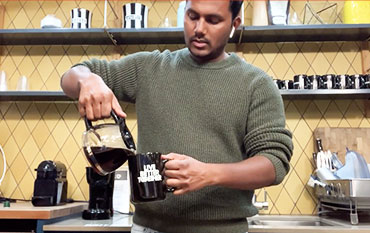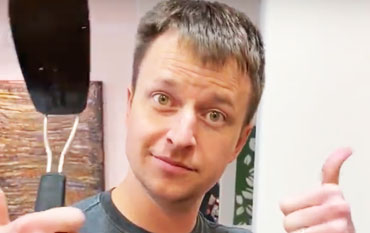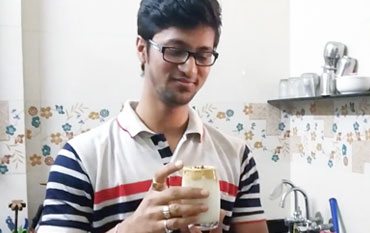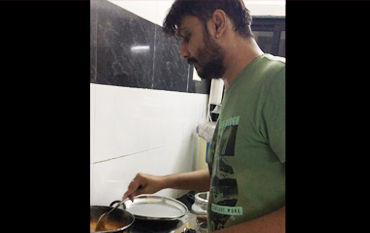Multidots is now WordPress VIP Gold Partner

We are proud to share that Multidots has moved up the ranks again and is officially a WordPress VIP Gold Partner! When we first became a WordPress VIP Silver Partner in June 2019, only 34% of the web was taking advantage of everything WordPress had to offer. Now in 2022, 43% of the online world is powered by WordPress, and as a VIP Gold Partner, we’re ecstatic to have contributed to that growth.
For those who are unfamiliar, we are a global development agency that helps publishers and digital organizations maximize their website performance with plugins and services that are efficient and 100% results-driven. With our excellent IT and Engineering teams, we’ve been able to collaborate on and successfully execute mass-scale projects with major enterprise clients like National Associations of Broadcasters, News Corp, PMC, and Ask Media. Thanks to our efforts, our clients all now have personalized environments that are secure, agile, and fresh.
Besides our clients’ success, being a part of the WordPress VIP Partner program and working with the VIP team at Automattic has exceeded all our expectations. We love working with them because they not only have provided us with the best tools and resources to succeed, but they are our loudest cheerleaders. They’ve supported us and have given amazing guidance when we’ve run into obstacles.
We may be biased, but our entire team continues to show why Multidots is a leader in the WordPress field. The drive, kindness, and poise under pressure we have are the keys that keep us and our work competitive and innovative.
We Help Publishers Succeed
As a progressive leader in publishing solutions, we have shown how hard maintaining efficient and profit-focused editorial workflows can be for technical teams at publishing organizations. These teams have too much to handle because many of them are still trying to use out-of-date tools and processes to update their websites and get content published. Because of this, they usually don’t see that they are wasting time, labor, and revenue that could be invested back into their organization.
Ultimately, we got fed up watching publishers not reach their fullest potential, which is why we decided to share our expertise and partner with technical teams to help them optimize their workflows and ecosystems for premium efficiency and performance.
A few of our key tools and services that will help streamline publishing process and business efforts include:
Multicollab
To say our plugin, Multicollab, is a gamechanger is an understatement. The plugin brings Google Doc-style editorial comments to WordPress to simplify your publishing experience. With just this single tool, you can invite others outside of your team to collaborate on pieces, add comments to any post or media, and have your technical team keep track of all activities on the Advanced Dashboard.
Multicollab is 100% compatible with the Gutenberg Block Editor for WordPress, which means that you can confidently make better edits and transform your content in real time. You won’t have to worry about comments or requests slipping through the cracks or your team losing track of deadlines.
Migration to the WordPress VIP Platform
Remember: just because you think that your website is good doesn’t mean it can’t be better. As a VIP Partner, we can help you migrate your existing WordPress website to the VIP platform so that your tech teams can have access to fresh support, flexibility, and performance features that will transform your editorial needs and keep your business competitive.
Having the migration option is crucial for publishers because their website needs will change as they refocus goals and improve editorial processes. If your technical team doesn’t have the resources they need to help your website keep up with all the changes, you won’t be able to convert visitors into customers — no matter how good your content is.
How We are Changing the Online World
Years ago, we wouldn’t have believed anyone if they had told us that every line of code we were going to create would touch millions of online users and transform technical teams everywhere daily. That quickly became a reality for us and we’re glad that we’re trusted as a principal voice in the WordPress community.
As stated on our Impact Page, we’ve already been able to reach 100+ million people through our coding, and we hope to hit 1 billion very soon by continuing to provide more meaningful publishing experiences, and streamlined, results-driven workflows.
References
Celebrating 11 Years of Serving People and Solving Problems!

What a moment! Our baby, Multidots, was born during the recession of 2009. Today, we are celebrating its 11th birthday amid a pandemic and crisis. We wish it would have been born with some immunity for recessions as well 🙂
It has been an incredible 11-year journey. Every passing year we have created new memories, which will make for great stories to tell.
We are grateful for our 12 loyal and “oldest” Dots — Chirag, Mayur, Nidhi, Kaushik, Bhavin, Parth, Tejas, Rajvi, Sagar, Nishit, Nitishchandra, and Nimesh, for their significant contributions, their dedication, and their confidence in the vision of Multidots. We feel honored and pleased to pay a small tribute by featuring them on our anniversary doodle.
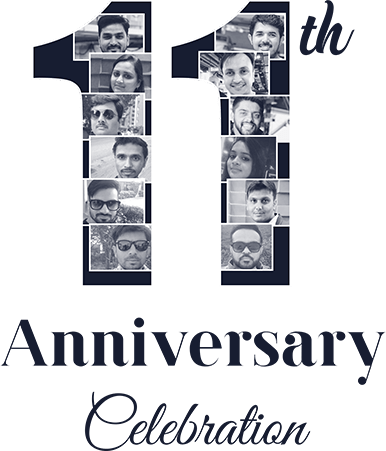
Multidots is a combination of all these smart Dots who are driven by their passion for solving problems and serving our clients. Their incredible minds have solved thousands of new problems, and their commitment has brought a big smile to our clients’ faces during these 11 years. They are not just the faces on our anniversary cover, but they are the faces behind the scene, providing exceptional services to our clients for the past 11 years.

Today, we are celebrating:
- The spirit of striving and surviving
- The commitment of care and compassion
- The excellence of engineering and efficiency
- The act of heart and mind
- The passion of serving people and solving problems
…and we are celebrating all those joyful moments, incredible stories, and life-long memories which all us Dots (as well as ex-dots) have created together—looking forward to creating new and more magical moments in the years to come!
Dots around the globe are celebrating the Spirit of Work From Home and showing their cooking talents

March 29, 2020

Anil Gupta
(CEO & Co-Founder)
Anil kicked-off the challenge by showing his latent talent of brewing a black (drip) coffee. He also explained a bit about the types of coffee and different methods to brew coffee. ☕
March 31, 2020

Jeremy Fremont
(Director of Business Development)
Jeremy showed his cooking talent by preparing delicious Lemon Ricotta Pancakes. It melt-in-your-mouth soft and tender, fluffy, and you’ll love that bit of brightness and tang from the lemon. 🥞
April 04, 2020

Vibha Tiwari
(Manager – QA)
Vibha prepared a loaf of Roti (Indian bread), Yellow Dal, & Steam Rice using traditional recipes. She used a variety of ingredients to prepare this food dish. 🙂
April 04, 2020

Mary Jane Zorick
(Technical Account Manager)
MJ showed her cooking talent by preparing a very American comfort food – Chicken Potpie and yummy Banana Muffins with Chocolate Chips. 🥧
April 05, 2020

Kushal Dave
(Business Development Executive)
In this unique challenge, Kushal showed his hidden talent of brewing a Dalgona Coffee which is trending in India during this quarantine time. Indeed, it is mouthwatering. Isn’t it? 😋
April 13, 2020

Deval Talati
(Manager – Operations)
Deval cooked a Spinach Potatoes Vegi, Roti (Indian Bread), & Steam Rice using traditional Indian recipes. “Cook Healthy, Eat Healthy Food, & Stay Healthy”. 🍲
April 13, 2020

Kaushik Baroliya
(Manager – Creative Designs)
Being a food lover, Kaushik prepared a spicy traditional Gujarati food – Dahi Tikhari & Bhakhri (Indian Bread) using different spices & yogurt. 🌶
April 19, 2020

Nishit Langaliya
(WordPress Developer)
Comedy King, Nishit showed his cooking talent by preparing the hot favorite Indian fast-food dish “Pav Bhaji” using different fresh veggies & spices. 🥦
April 19, 2020

Meet Makadia
(WordPress Developer)
Meet prepared one of the most favorites breakfast dish “Bataka Pauva”, Light & Healthy. It seems very tasty. Recommend to try this dish in your breakfast! 👌
April 19, 2020

Mayur Keshwani
(Manager -WordPress)
Tempting & Crispy Veg Frankie has prepared by Mayur which shows his hidden cooking talent. It looks cheesy & yummy. 😍
April 24, 2020

Nimesh Patel
(Manager – Product)
Crunchy & Unique “Maggi Bhajiya” has prepared by Nimesh adding a flavor of tangy tomato ketchup. Delicious! 😋
April 26, 2020

Chirag Patel
(Manager – WordPress)
Chirag prepared the delicious “Peanut Sweet Roll” with all-natural and wholesome ingredients that fill your mouth with an exotic sweet taste. 😍
April 27, 2020

Hitendra Chopda
(WordPress Developer)
Light & Healthy! Yes, “Swaminarayan Khichdi” was cooked by Hitendra with vivid ingredients & fresh veggies. 👌
April 27, 2020

Janki Moradiya
(WordPress Developer)
People who love to eat spicy food, this dish is especially for them. Yes, one of the popular seasoned Rajasthani dishes “Daal Bati” prepared by Janki with a spicy tadka. 🌶
May 10, 2020

Jay Upadhyay
(WordPress Developer)
Jay added the taste of Punjab by preparing the delicious “Dal Makhani & Naan”. He used vivid ingredients & spices to prepare this food dish. 🥣
May 17, 2020

Kushal Shah
(WordPress Developer)
Kushal prepared a variant of Maggie named “Creamy Cup Maggie”. It looks very velvety 😋
May 26, 2020

Priyank Patel
(WordPress Developer)
Priyank baked alluring “Choco Muffins”. Homemade muffins are so much better than anything at your corner cafe. It looks very fresh & yummy. 🧁
Our response and readiness for business continuity during the Coronavirus (COVID-19) pandemic

This is a novel time in our history. The COVID-19 pandemic is having an impact on the health of many families, the businesses we rely upon, the health of the global economy, and the way we live our daily lives. As we all continue to navigate through these unprecedented and evolving challenges, we want you to know that Multidots is here for you and prepared to face the challenging phase.
In our more than 10 years of business, we’ve weathered the storms of the Year 2008-09 financial crisis and the recession that followed, city/state level curfew, internet outage because of curfew and fire in our office which had touched our regular office life badly, and throughout this journey, our mission of Serving People, be it our employees, our customers and our partners, remained our top priority.
All these unfortunate events taught us that ‘it’s never too late’ to kick-start the work on Business Continuity Plan. Also, we have been always kept on updating our learning from the events, which has helped us so far to remain better positioned to recover from the business interruption, financial impact, and loss of life that a natural disaster or man-made event may cause.
Having a pre-defined and well-documented business continuity plan has helped us to clearly communicate how our business will respond during such an unfortunate event — and indeed, is one of the best investments our company has made. As we address a pandemic there is no doubt – it will become a chapter in the history books. However, in this challenging phase, our commitment to Serving People will remain unchanged.
The intent of sharing our readiness in the form of a Business Continuity Plan is to provide assurance to our existing and prospective clients that Multidots is enabled to respond and ready to recover from a disruption.
People
Supporting our Dots during this period is one of the priorities and they are equally showing ownership in providing the services our clients need and expectations. We have taken all necessary actions as soon as COVID-19 has started spreading,
- To protect the physical well-being and financial security of our employees so that they are in a position to care for their health while also supporting work routine.
- Preparing our team for remote work. At present, 100% of our global workforce is working remotely.
- Dots have adequate facilities like high-end internet connectivity, proper home office set-up which will help them to maintain productivity.
The commitments we have made to support and care for our Dots ensure that we are ready and equipped also to support our clients during this uncertain phase.
Backup
Be it Project, Resource or Internet backups – We Are Ready!
- As per our standard practice, we keep up to 15% of engineers on the bench. While on the bench, we utilize them for internal tools, training and research work. We allocate these resources to live projects in case of an emergency.
- All the project managers & technical leaders are closely connected with the internal weekly process meeting. In case of a need for a resource, they can easily sync up with each other.
- We are confident to handle up to 15% of team fluctuation. In the case of greater impact, where team fluctuation reaches more than 15%, our first preference is to talk to our other ongoing projects/customers to understand their priority and check if we can release resources and serve the urgency of other projects.
- In the worst-case scenario, if the team fluctuation is >15%, that is a scenario where we will come back to you to find alternate solutions. We have trusted strategic partnerships with other small but skilled development agencies in India, and we are prepared to lease developers from such companies with short notice.
- Being a WordPress agency, we have all our developers trained to follow our best practices including, development workflow, coding standards, and advanced WordPress knowledge. Thus, our developers are easily able to swiftly, pick up the new project in between, with a quick Business Logic knowledge transfer.
- Daily scrum meetings are in our blood. When working in a team, each person in the team is aware of the latest status of the project. In the scenario, when a Project Manager is unable to work, a Team Leader or Technical Analyst or other Project Manager (we have a team of 6 project managers) can take over the project in case of urgency. Daily scrum meetings allow another developer to pick up a team-mate’s task in case of short term unavailability of a developer.
Internet
All our global workforce has a high end – stable internet connectivity. Hence we face negligent to minimal work disruptions due to internet connectivity. In addition, Internet connectivity and Electricity in Large/Mega/Metro cities have been most stable and in its best phase from the last 4+ years in India and fortunately, our majority of team members are located in large cities like Ahmedabad, Bangalore, Bhubaneswar, Delhi or Mumbai. Hence, internet connectivity has not been a concern.
All our employees have a stable broadband internet connection and use one of these broadbands while working remotely:
- Airtel Broadband
- GTPL Broadband
- You Broadband
- Reliance Broadband
Also, all of the team members have a backup option of 4G cellular connectivity in case their main broadband network is down. 4G is wide with good coverage.
Data Security & Protection
As a dynamic & trusted WordPress VIP Agency, our processes are fully derived to be compliant and we take ownership to maintain the safety & security of your valuable data. Integrity is our fundamental value and makes up the core of our corporate philosophy keeping us committed to center our engagement around this approach.
Date Security is critically important to us and we believe it is important for our clients to understand how well equipped we are.
All our servers are hosted on the cloud and fully secure with
- Advanced Cloud DDoS Protection
- Redundant cloud backups
Server Connectivity
- All staging servers can be managed through VPN only
- VPN connection rights are given to authorized Dots
Tools
Our process/tools are designed to support remote work. For Project Collaboration we use Basecamp or Teamwork which are on the cloud. It is easy to assign access to the new developer. Our Development workflow is integrated with Github CI/CD workflow, and our staging servers are in the cloud. Thus, this can be assigned easily with the right permissions.
Below are the tools we actively utilize to keep a track of all project-related conversations:
- Slack – As per our process, for all running projects we create a project-specific channel i.e. “prj-<project_name>”. We also invite our Client on the same slack channel. This way all the project related conversation stays synced.
- Basecamp – PMS to document/collaborate all project-related communication.
- Teamwork – For Internal Task Management and Issue Tracking for all the projects. So any new developer can ramp up.
- Zoom – Real-time Video Conferencing
- Dialpad – For Leaders/Project Manager Direct Phone support
- Github – Project Source code and Version Control Management
- GSuit – At Multidots we use Google GSuit for our needs like Mail, Google Documents which is easily available to our team without any downtime.
Our bit in the COVID-19 phase
The following are some actions being taken to protect our clients, our people, facilities, and workloads.
- We are extending the validity of support bundles for the clients who have purchased or willing to buy.
- Dots are happy and flexible to adjust work hours to meet our clients’ new routine and work schedule if any.
- Our HR & Operations team is continuously monitoring the situation and working tirelessly to help and educate our team to stay safe, healthy, and motivated.
- We have created a Special Support Squad for our Dots which will be there for the team to provide morale to finance support.
Without a doubt, our greatest common achievement is how we have all reacted in challenging times. Dots, clients, partners, vendors, and support staff have all contributed tremendously to keep our operations running.
Normalcy will return. These are testing times, but our small Dots community has, we firmly believe, met that test so far.
References
A very big 2019

We’re honoured to be one of the select few official WordPress VIP Agency Partners. With our participation in the VIP Featured Agency Partner program, our WordPress development services come with the extra benefits of the added security, flexibility and performance that most of our high-volume and enterprise projects demand.
The World of WordPress
WordCamps
With great enthusiasm, we were able to be a part of 11 different WordCamps across the globe in 2019 – WordCamp Pune, WordCamp Bangkok, WordCamp Kolkata, WordCamp Europe, WordCamp Nagpur, WordCamp Vadodara, WordCamp Udaipur, WordCamp USA, WordCamp for Publishers, WordCamp Düsseldorf, WordCamp Ahmedabad and proud to be volunteers, speakers, sponsors, and organizers of some of the WordCamps.
Happy Morning, WordCampers! All set for the day. Don’t miss to visit our booth if you are at @WCAhmedabad and say Hi by grabbing some exciting goodies. Multidots team is eager to welcome you at our booth. #WCAhmedabad #WordCamp #WordPress pic.twitter.com/tev79TGeLZ
Multidots (@multidots) December 14, 2019
What a Vibrant and Inspiring @WCEurope was!! Our COO @aslam4net and Dot @afsana_multani shared their amazing experience at @wpcafe with wonderful people. See you all next year for another amazing WordCamp Europe 2020 in Porto. #WCEU #WCEurope #Multidots #WPCafe pic.twitter.com/9lUoHUKXcK
Multidots (@multidots) June 24, 2019
Do_action charity hackathon
Multidots team and other community members from Ahmedabad (at our headquarter) organized the do_action charity hackathon and helped 6+ local non-profits to build their brand new websites.
Big applause for all the participants who contributed in Do ction charity Hackathon. #WordPress #Multidots #DoAction #hackathon #charity #WordPressCommunity #Event pic.twitter.com/xFyrvGuBX0
Multidots (@multidots) September 7, 2019
Big Talk at BigWP NYC
Our CEO & Co-founder, Anil Gupta talked about the engineering excellence that our team at Multidots demonstrated by leveraging the REST APIs to power the CNN of kicks and one of the largest digital publishers of NYC.
Five for the Future
Five for the Future encourages organizations to contribute five percent of their resources to WordPress development. Multidots pledged to sponsors 7 contributors for a total of 28 hours per week.
Sneaker News Case Study featured at WordPress VIP
We could not be more proud when our work on Sneaker News got featured by WordPress VIP.
Wish you had more time on your hands? Check out how our partner @multidots used the REST API to help sneaker mavens @SneakerNews reduce operations time by 65% https://t.co/4ze1nwROEG pic.twitter.com/QDioST9SDM
WordPress VIP (@WordPressVIP) January 17, 2020
- 60% of dots contributed to WordPress. Kudos to all our dots! 🎉
Our wall of fame
- We dedicate our selection as “Top 1000 Global B2B Companies” on the clutch to our clients for trusting us, and our team for delivering that trust. We are honoured to be featured in the Clutch 1000.

Our CEO, Anil Gupta has the honor to talk about our Passion for “Serving People” at the forum on “Doing business between India and USA” organized by Official Dulles Regional Chamber of Commerce, Indo-American Chamber of Commerce, and Fairfax County Economic Development Authority.
- A podcast hosted by Brian Krogsgard from PostStatus and our own Anil Gupta on a candid talk about establishing a very people-first culture at Multidots.
Have a look at our CEO @guptaanilg sharing his vision with @Krogsgard about his journey & philosophies behind building Multidots @ https://t.co/YH2czdW47x pic.twitter.com/PrG4OPkC61
Multidots (@multidots) February 8, 2019
- Asif Rahman did a podcast with our co-founders, Aslam and Anil. They covered great length and detail of Multidots’ origin story, journey, Ups-downs, cultures, and goals.
The Intro of Episode 4 of ‘Adda with Asif’ is coming live! I have @aslam4net & @guptaanilg , the co-founder of @multidots ! Here they told the story behind their name #Multidots ! Watch – https://t.co/P5RaVLgS2z #AddaWithAsif #WordPress #Entreprenuer #story pic.twitter.com/yzMEBiqEKl
M Asif Rahman ⓦ (@Asif2BD) January 13, 2019
- Multidots Foundation organized the “Fight Against Hunger” event and distributed food hampers to needy people. Multidots foundation is a humble effort by our team at Multidots to give back to the community.
Charity for Humanity
Multidots (@multidots) April 29, 2019
If you can’t feed a hundred people then just feed few.
Multidots Foundation organized “Fight Against Hunger” event and distributed food hampers to needy people. https://t.co/W59MJDg60K #MDFoundation #MD10thAnniversary #Donation #Charity #Multidots pic.twitter.com/zfQBUNC1Vn
Our Global Footprints
We are always excited to meet new folks, share ideas, and learn. Hence, we travel, attend conferences, and meetups across the globe. Here are some of the events & conferences we went to.
- We had a blast exhibiting at LeadsCon, Vegas event with our strategic partner Pressable. LeadsCon is one of the world’s largest conferences for the lead generation and performance marketing industry.
It’s been a great day so far at @leadscon.
Pressable (@Pressable) March 6, 2019
Website performance is key when you’re investing in driving traffic to your site!
And both of our CEOs are having fun! @guptaanilg from @multidots and our very own @JayNewmanTX. #LeadsCon Booth 1218 pic.twitter.com/KeESXvM2NH
- Our CEO and Director of Business Development, Jeremy Fremont had a great time during PubCon, Vegas event connecting with people and businesses in the internet marketing industry.
- Our participation in SMX East, New York gave us great insights into the importance of SEO in the publishing industry and enables us to serve our clients better.
- Attending the Affiliate Summit East and Multidots Sponsored brunch during the event helped us to connect and build face-to-face relationships with online publishers, influencers, media owners, traffic sources, advertisers, global brands, networks, technology firms, agencies, and other solution providers.

- Multidots team attended and sponsored Laravel Meetup in Mumbai and had a great time connecting with key influencers, contributors, and experts in the Laravel framework and community.
- Our COO and Co-founder, Aslam Multani, participated at Google for WordPress Publishers in Bangalore to fuel his obsession with website speed and performance on mobile devices.
Amazing speaker with good sense of humour to make session interesting and full of knowledge boast up community of WordPress and developers engaging more and more ,thank you @googleindia for such a wonderful meet-up look forward for more and more… #GFWP #GfWPINDIA #wordpress pic.twitter.com/nR2mNcvxOA
Khadija Shabbir (@khadz4) November 21, 2019
Noteworthy Highlights
- Multidots and Pressable entered into a strategic partnership. Pressable offers a unique value proposition of low-cost but high-tech hosting infrastructure and high-touch customer services that makes them a great fit for our customer’s hosting needs.
Multidots is very happy to become a strategic partner of @Pressable. Let’s multiply our performance capabilities with the best growing agency. https://pressable.com/strategic-partners/multidots/… #Pressable #PressOn #Multidots #StrategicPartner
— Multidots (@multidots) July 12, 2019
Our website speed and performance tool – SpeedOMeter powers Pressable’s customers and users to test their website speed and performance issues.
- We have joined the Performance Marketing Association as Solution Providers to help Advertisers and Publishers to maximize their revenue.
A BIG welcome to new member @multidots . Your membership makes a difference in our industry! #performancemarketing
PMA (@pmassociation) June 26, 2019
- We also became a member of Leads Council. As a member of the Leads Council, we get an opportunity to member-exclusive events, forums, research that help us to gain key insights into the lead generation industry. It’s an added-value for our clients to work with us as we talk the same language and terminologies.
- DotStore – a venture of Multidots released few new plugins and several other version upgrades to existing plugins. With 20,000+ download and 7000+ number sales, our DotStore serves and helps store owners around the world to run their online-shops efficiently.
- Our new SaaS venture – Ruvvu made a debut in 2019. Ruvvu helps business owners around the world to collect and manage business reviews at an affordable price.
- We have launched a new WordPress plugin – WPBRicks which offers 100+ readymade Gutenberg blocks design options to build awesome websites with just a few clicks.
- A day in Multidots, video premier that showcases our culture, traditions, and routine at Multidots.
- We launched a brand new website of Multidots that truly reflects our vision and commitment to serve and help “content publishers” around the world.
The Culture of Celebrations
- As like every year, we have celebrated the festival of happiness with different events starting the first day with an “AdMac – Season 6”, second day “Hawaiian Day”, and on the third day, we have invited the creative tattoo artists to make sure that the year ending of our dots are remarkable. We had lots of fun, laugh, & of course enjoyed the delicious food.
With lots of fun & sweet memories we have completed the “Hawaiian Day” and the winner of this beautiful day is @YearOfTheHulk – Mr. Hawaiian & Snehi Patel – Ms. Hawaiian. Congratulations guys! 🏆🤗 #ChristmasCelebration2019 #Day2 #HawaiianDay #MDCulture pic.twitter.com/pKxey9yioT
Multidots (@multidots) December 30, 2019
🔥Creative Tattoo artists & Happy Meal are here to add more happiness on the last day of 2019. Dots are super excited to put some outstanding tattoo & make this day one of the memorable days of 2019. 💫✨🤗 #ChristmasCelebration2019 #Day3 #MDCulture pic.twitter.com/BNuJbSk4T4
Multidots (@multidots) December 31, 2019
- We had a grand and glorious celebration of Multidots’ 10th Anniversary. We have invited all our existing dots with their family as well as our x-dots who contributed to the growth and success of Multidots. Catch glimpses of the journey here.
@multidots 10th Anniversary Celebration, Here are some glimpses of our beautiful event. Congratulations all the Dots on your well-deserved success and achievements. #MD10thAnniversary #Multidots #MDCulture #AwardCeremony #Celebration #GetTogether
Multidots (@multidots) May 7, 2019
- Multidots often arrange in-house games tournaments and this allows to strengthen the bonding amongst the dots and add fun in day to day work. This time it was the Carrom & Ludo tournament and the dots had a pleasant time participating and cheering each other.
Woohoo!! Make some noise for the Champions!!! Congratulations to all the Carrom and Ludo Tournament Winners and Thank you all the Volunteer and Organizers for their constant support. #CarromTournament #LudoTournament #SaturdayFun #Multidots
Multidots (@multidots) July 27, 2019
References
- Do Action Charity
- Multidots – Pledges
- WP VIP
- Clutch
- Dulles Regional Chamber of Commerce
- Indo-American Chamber of Commerce
- Fairfax County Economic Development Authority
- Post Status
- Youtube
- Multidots Foundation
- Pubcon
- SMX East
- Affiliate Summit East
- Eventbrite
- Laravel
- Pressable
- SpeedOmeter
- Pressable – Speed Test
- Leads Council
- Dotstore
- Ruvvu
- WPBricks
Multidots Named a Top Global B2B Company

AtMultidots, we pride ourselves on being at the forefront of trends. We treat our client’ssuccess as our own, so their opinions matter most of all. Every year Clutchannounces the 1,000 highest performing B2B companies on their site based ontheir verified reviews — the Clutch 1000! We are thrilled to announce thatMultidots has been included on the Clutch 1000 for 2019!
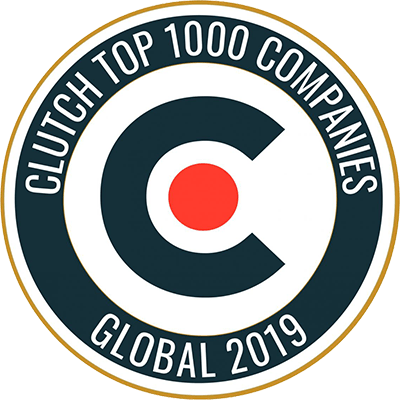
Not only are we on the list, which places us in the top 1% of the more than 160,000 B2B companies on Clutch, but we are ranked #466! We are one of over 130 web development companies on the list and we are the only company based in Dunn Loring, Virginia!
We are honored to be featured in the Clutch 1000. This award would not be possible without our wonderful clients who left us reviews on Clutch. Based in Washington, DC, Clutch basis its rankings and ratings on research conducted by their independent team. This ensures that all information on the site has been verified.

Being in Clutch 1000 is the moment of proud and pleasure for all of us at Multidots. We are grateful to our clients for hiring us to solve some interesting problems. I am immensely proud of our team at Multidots for their state-of-the-heart “serving people” attitude, which shines by the reviews provided by our clients on Clutch.

We are thankful for everything 2019 has brought and look forward to a successful 2020! Check out our Clutch profile to learn more about us or get in contact with us directly to start your new project today!
References
Multidots Shines as a New WordPress VIP Silver Agency Partner

Automattic, the company behind WordPress.com, WooCommerce, and WordPress VIP announced and welcomed Multidots as WordPress VIP’s new silver Agency Partner to their highly regarded and exclusive list of featured agency partners.
WordPress VIP is the leading provider of enterprise WordPress. With 50-60% share of a global CMS market, WordPress powers more than 34% of the Internet and is the most popular CMS in the world. WordPress VIP provides a fully managed WordPress cloud platform for unparalleled scale, security, performance, and flexibility; as well as end-to-end guidance and hands-on support. Some of their enterprise clients include major brands like TED, CNN, Spotify, Capgemini, TechCrunch, Facebook, Microsoft and many more.
Multidots is a global Enterprise WordPress digital agency headquartered in India and operating as Multidots Inc with Sales & Support offices in Virginia and California, USA. With 110+ global and distributed team Multidots has prominent presence and clients in North America, Asia, and Europe. Multidots is one of the market leaders helping content marketing, performance marketing, lead generation and publishing companies like QuinStreet, ABUV Media, Higher Educations and All Star Directories with their digital strategy and content publishing needs. Enterprise Brands and Global Corporate Groups like Accenture, Jumeirah, NAB, and SneakerNews trust Multidots for their complex and large scale WordPress implementation and multi-platform integration.

Multidots helped ABUV Media to grow from annual revenue of $100K to almost $15M and startup to a successful acquisition. Their technical expertise in the areas of WordPress, Page Performance and Security have been the key to the success of our websites. Their selection to this highly exclusive and reputed WordPress VIP featured partner program boosted my trust and confidence in their talent and team. My best wishes to Anil, Aslam, and Multidots team for this remarkable achievement.


Unlike many similar programs in the technology business, the WordPress VIP Featured Agency Partner program is kept deliberately small and highly selective. With the fact that this program was launched 9 years ago, they have still maintained only a handful of agencies as featured partners. It shows the commitment of selecting the partners proven themselves as true experts handling enterprise scale WordPress projects. After working closely with an agency on a VIP project they look for if your code is of consistently high quality, and if you engage positively with them and the client and based on that they may choose to invite you to become a Partner. And they also factor your involvement and contribution in the WordPress community. Other key criteria include clear product understanding and innovative go-to-market strategies.
In the course of 10 years, Multidots has achieved many milestones and success but Multidots making into the VIP’s featured agency partner is the biggest among all. Looking at the fact that there are approx 100,000+ WordPress Agencies in the world and 15,000+ agencies in India alone, Multidots being one of the two VIP agency partners in Asia is the moment of pride and honor for everyone at Multidots. But we also see this as a great opportunity and responsibility to work hard on improving the bad image of India as a country delivering the cheap and low-quality services.

I would humbly and gracefully dedicate this achievement to our wonderful Dots (employees of Multidots) for their massive and meaningful contribution in the WordPress Community. Since the last three years, our 20 Dots contributed to WordPress core 12 times, 10 Dots contributed in WooCommerce 7 times, played a key role to manage 32 meetups at Ahmedabad WordPress Meetup Group, Sponsored the dozens of WordCamps around the World, organized the first ever WordCamp in Ahmedabad and speaking at local and global WordCamps and WordPress Events.

As a long-time member of the growing WordPress community, we’re thrilled to be featured in this unique partnership program with WordPress VIP. With our participation in the VIP Featured Agency Partner program, our WordPress development services come with the extra benefits of the added security, flexibility and performance that most of our high-volume and enterprise projects demand. We are very grateful and thankful to our existing clients for trusting us in solving some unique problems and motivating us. And we are thrilled and pumped up to continue on our mission – “Serving People & Solving Problems”.
References
Build or Buy Your Enterprise WordPress Solution?

Key Takeaways
- Your setup will change as your platform grows, so focus on how ownership and knowledge will transition over time.
- Look beyond headline costs. Hiring, training, and tools can quickly turn an in-house setup into the more expensive option.
- Start small before you commit. A short pilot project shows you how an agency really performs when deadlines and feedback loops get real.
- Write everything down as you go. Proper documentation keeps you from losing critical know-how when people move on.
- Mix internal control with external help – keep day-to-day ownership in-house, and bring in agencies for big projects or specialist needs.
You’re staring at a WordPress platform that needs to scale with your billion-dollar brand, and the clock is ticking. Maybe you’re fielding complaints about slow feature releases, or your board is questioning why a simple update takes three weeks. Perhaps you just inherited a site held together by contractors who’ve gone silent.
The decision between building an in-house WordPress team or partnering with an agency boils down to three critical outcomes that determine your platform’s success: who owns the keys when systems fail, how fast your team ships features that drive revenue, and whether your codebase becomes an asset or a liability as you scale.
Most enterprises don’t realize they’re not choosing a model forever. You’re designing an ownership strategy that will evolve within a few years as your needs mature and your platform stabilizes.
What Factors Influence Enterprise WordPress Cost?
Enterprise WordPress costs hinge on factors like project complexity, maintenance needs, integrations, performance goals, and whether you work with an agency or run things in-house. Knowing what drives those costs helps you plan realistic budgets and sidestep the kind of sticker shock that can stall a project.
What’s included in an enterprise support contract?
- 24/7 emergency response with guaranteed SLAs.
- Proactive security monitoring and patch management.
- Performance optimization and Core Web Vitals improvements.
- Plugin vetting and license management.
- Strategic roadmap planning and architecture guidance.
WordPress VIP Gold Partner agencies typically command a significant annual investment for full-scale enterprise support. That price tag includes ongoing performance tuning, security reinforcement, and dedicated account management to keep your platform running at peak strength.
On the other hand, building an equivalent in-house team can quickly become a major financial and operational commitment. Recruiting several senior engineers, providing round-the-clock coverage, and maintaining tools and infrastructure often amounts to a far higher ongoing cost than many anticipate – especially once benefits, training, and hiring timelines are factored in.
Enterprise hosting adds another layer of investment, with platforms like WordPress VIP, Pantheon, WP Engine, and major cloud providers each offering different pricing models based on traffic, storage, and support levels.
Put simply, agencies provide full teams – developers, architects, QA engineers, project managers – for the cost of 1-2 senior in-house hires.
Partnering with a WordPress Agency
When your marketing team needs a complex integration live in six weeks, or your platform’s begging for performance tuning, an agency partnership gives you expertise on tap. You instantly gain access to WordPress pros like performance engineers, accessibility specialists, and migration architects, without the months of hiring headaches or the added payroll pressure.
Enterprise agencies come armed with battle-tested processes, sharpened across hundreds of WordPress builds. While your team might be wrestling with multisite governance for the first time, they’ve solved those same puzzles for Fortune 500s many times over, and learned every costly lesson so you don’t have to.
The financial upside doesn’t stop at talent. Agencies roll enterprise-grade tools and infrastructure into their pricing – load-testing suites, security scanners, project systems – that would otherwise drain your IT budget by thousands each month.
Then there’s the flexibility. Need extra devs and QA engineers for a big launch? Scale up. Quiet period? Scale down. You stay lean, fast, and resourced exactly when it matters.
And maybe the biggest perk: fresh eyes. When an agency asks, “Why does this workflow need seven approvals?” they’re not nitpicking – they’re spotting the inefficiencies your team’s stopped noticing.
Agency Partnership Constraints
Even the best agency partnerships come with built-in limits you’ll need to plan for. When something breaks out-of-hours, your agency team probably won’t have direct production access – they’ll walk your on-call engineer through fixes instead. It keeps your infrastructure safe, but costs precious minutes when every second matters.
Change approvals are another drag. Standard reviews can typically add 48–72 hours to deployments. Your in-house team might push a hotfix in hours, but agency work moves through project queues, code reviews, and sign-offs – great for quality, not for speed.
Support contracts promise response times, not instant resolutions. A 15-minute SLA acknowledgment for P1 issues still leaves room for multi-hour (or multi-day) investigations and test cycles.
Then there’s resource juggling. That senior architect who knows your setup inside out might be knee-deep in another client’s migration when you need them.
And finally, knowledge doesn’t transfer itself. Without a clear handoff plan, critical platform know-how stays siloed with agency staff, making future transitions harder than they should be.
Building an In-House WordPress Team
An in-house team shines when your WordPress setup needs constant evolution and tight brand alignment. You control deployment schedules and priorities, which means you’re not waiting for agency bandwidth when the CEO wants homepage changes before tomorrow’s earnings call. Features go live based on business impact, not a project queue.
Institutional knowledge stays where it matters: inside your company. Your developers know why certain integrations exist, who to consult, and how platform choices fit your five-year plan – context no handover doc can fully capture.
When something breaks, they’re already inside the system. While an agency hunts for credentials, your team’s debugging live – cutting downtime and limiting revenue loss.
Everyday updates happen at business speed. Campaign pages launch in hours, not days. The team’s on hand for impromptu strategy huddles and can pivot fast when plans change.
And best of all, your platform is their one and only focus.
In-House Team Limitations to Consider
Building internal WordPress muscle sounds simple…until reality hits. Finding great engineers often takes 3–6 months, and that’s if you can even tempt them in today’s market. Meanwhile, your roadmap idles while you sift through CVs, run interviews, and wait out notice periods.
Specialist needs quickly balloon your headcount. That senior dev you hired? They can’t also moonlight as your performance guru, accessibility lead, and security architect. Each skill gap means another pricey hire, another recruitment loop, and more management to juggle.
Then come the tools. Those monitoring systems, security scanners, and deployment pipelines agencies bundled in? You’ll now be footing the bill and keeping them running – typically $3k–$5k a month just for tooling.
Resource planning becomes a juggling act. Staff for big launches, and you’ll pay for idle hands later; staff lean, and you’ll panic when the board demands urgent changes.
Worst of all, knowledge gets trapped. When your lead dev takes time off or moves on, vital platform knowledge goes with them. Without backup, you’re one resignation away from a full-blown platform crisis.
How Long Does Enterprise WordPress Development Take?
With the right expertise, a solid enterprise WordPress build can be delivered in 8–12 weeks, depending on scope and complexity. Expect 1–2 weeks for discovery, 6–8 weeks for development, and around 2 weeks for QA and handoff – assuming clear requirements, quick feedback, and no last-minute curveballs.
Migrating from platforms like AEM, Sitecore, or Drupal takes longer – usually 12–20 weeks – to cover content mapping, data transformation, redirects, and the quirks that pop up when moving decades of content. The more content you’ve got, the longer it takes; shifting 50,000 posts is a very different beast from 5,000.
The part no one likes to admit is that speed kills quality. That “two-week build” might launch fast, but it leaves behind messy code, patchy documentation, and brittle architecture that breaks at the first update. You’ll spend months fixing what should’ve been done right from the start.
Agencies shine at time-boxed projects – they’ve honed the art of hitting deadlines and keeping teams aligned after hundreds of launches. Their playbooks keep timelines tight and projects tidy.
In-house teams, meanwhile, thrive on continuous improvement – A/B tests, micro-optimizations, and ongoing refinements that quietly build competitive edge. The real question is which setup fits your project’s rhythm.
What are the hidden costs of agencies vs in-house?
Agencies come with sneaky add-ons: scope creep without formal change orders, post-launch maintenance, plugin licensing fees, and time lost on knowledge transfer. Poor documentation alone can quietly drive up future dev costs, as new engineers burn weeks decoding mystery code and reverse-engineering features.
The real shocker is that true 24/7 coverage takes 8–10 engineers, not the 3–4 people most execs imagine. Once you factor in holidays, sick days, and training, you’ll need roughly double your initial headcount to keep support sustainable.
Agency setups also breed dependency. Without thorough handoff docs, you’ll find yourself paying top dollar for “minor” fixes because only the original devs understand the build. That quick patch? Suddenly, it’s a $5,000 change request.
In-house teams aren’t immune either. Ongoing training – courses, conferences, certifications – costs thousands per developer every year. Add recruitment fees (20–30% of salary), hardware refreshes, tool licenses, and management time, and the bill climbs fast.
Then there’s downtime. Whether caused by an agency’s slow response or an internal skill gap, every minute offline hits your bottom line. For high-traffic publishers, that’s thousands per hour lost in ad revenue, and even more in customer trust.
The Hybrid Model: Best of Both Worlds
Use agencies for defined projects and specialist expertise, keep in-house teams for day-to-day work and brand-specific needs. Or blend the two. The hybrid setup is now the enterprise norm because it captures the strengths of each model while cutting the downsides.
In the best hybrid setups, your internal team runs the show: platform governance, production access, and routine updates stay in-house. They’re the institutional memory – ready to respond fast and keep vital knowledge where it belongs.
Agencies step in for the heavy lifting – architecture choices, multisite migrations, performance boosts, or accessibility overhauls. You get deep expertise and clear deliverables without adding permanent headcount.
Staff augmentation fills the middle ground, embedding skilled WordPress professionals who work alongside your team for months at a time. They learn your business while injecting outside know-how.
Typically, companies start with agency projects, move to managed services, and then grow in-house capability over time. It’s a smart evolution – spend wisely, keep standards high.
Above all, the hybrid model balances risk with agility, so you’re never overly reliant on either side.
Vetting Partners for Long-Term Success
Choose your WordPress agency like you’d choose a co-founder: carefully. Review code samples from similar projects, speak directly with the developers (not just the sales team), check client references for work of a comparable scale, and lock in detailed SLAs with response times and penalty clauses. A little diligence here saves a lot of costly rework later.
Beyond credentials, ask for code samples and developer references from comparable builds. Strong agencies will happily share sanitized excerpts showing their architecture, documentation, and solutions to common enterprise hurdles.
Insist on client-owned repositories from day one – it keeps your code accessible if the relationship ends and prevents vendor lock-in.
Lastly, review their migration and handoff documentation. The best partners provide detailed runbooks covering architecture choices, deployment steps, and maintenance workflows.
Why Choose WordPress Over Other CMSs?
WordPress cuts out the hefty annual licensing fees that come with proprietary platforms like AEM or Sitecore. That means more budget for development, optimization, and user experience, instead of sinking cash into vendor costs that add no direct value.
Its developer community is massive, too. While finding a qualified Sitecore specialist can take months, WordPress offers thousands of skilled professionals worldwide. This deep talent pool makes hiring easier, keeps costs lower, and avoids the classic vendor lock-in that comes from scarcity.
The mature plugin ecosystem speeds everything up. Need advanced SEO, multi-currency eCommerce, or smart forms? Tried-and-tested solutions already exist, saving weeks of dev time so your team can focus on what’s unique to your business.
Deployment also moves at a sprint. With no enterprise red tape, WordPress lets you ship updates in hours instead of weeks, so you can outpace competitors still waiting on sign-off.
That said, AEM and similar platforms shine if you need deep personalization, heavy workflow automation, or unified vendor support across a full digital experience stack. The best choice depends on your real needs, not the logo on the box.
Is WordPress Enterprise-Ready?
Here’s a quick rundown of what Enterprise WordPress delivers versus the standard version:
Enterprise WordPress vs. standard WordPress:
- Enhanced security protocols, including automated scanning and DDoS protection.
- Multi-environment workflows with staging and development pipelines.
- Advanced caching and CDN integration for global performance.
- Role-based access control with SSO integration.
- Automated scaling for traffic spikes and high-availability configurations.
Enterprise WordPress: Examples & case studies:
Powerhouses like News Corp, Time Inc., and CNN trust WordPress to run high-traffic sites serving millions every day. Global names – The Walt Disney Company, Mercedes‑Benz – use it for marketing hubs that slot neatly into their wider tech stacks. Even WhiteHouse.gov and NASA meet tight compliance standards on WordPress infrastructure.
Top universities such as Harvard, MIT, and Stanford run sprawling multisite networks from one central platform, while SaaS giants like Zoom and Spotify keep product and marketing separate by using WordPress for content.
Together, these examples show just how far WordPress can go. With smart architecture, clear governance, and the right partners, it scales to an enterprise level while keeping the flexibility and cost efficiency that made it so popular in the first place.
Three Ways to Work with Multidots
As a WordPress VIP Gold Partner with 300+ enterprise migrations, Multidots knows how to steer major WordPress transformations to completion – smoothly and reliably. We’ve launched mission-critical sites for leading brands and kept high-traffic platforms stable through zero-downtime deployments.
Project Engagements
Got a clear goal—like a CMS migration, site launch, or performance overhaul? Our teams deliver on time, on budget, and without surprises. Expect dedicated experts, defined milestones, and built-in knowledge transfer to strengthen your team.
Managed Services
For platforms needing ongoing tuning, updates, and new features, our managed services provide continuous, enterprise-grade support with predictable monthly spend.
Staff Augmentation
Need senior WordPress talent fast? Our developers embed seamlessly with your team, working your hours and tools.
We deliver enterprise quality without the bloat—efficient, scalable, and designed to grow with you.
Your Strategic Next Steps
Start by pinpointing where you are in your growth journey. Launching, scaling, or tackling technical debt. That clarity shows whether you need agency speed, in-house control, or a blend of both.
Next, run the full cost picture: recruitment, tools, training, and the price of slower delivery. The “cheapest” route rarely ends up costing the least.
Test the waters with a pilot project to gauge fit, quality, and communication before committing long-term.
If a hybrid setup makes sense, phase it in – use agency support for the urgent wins, then grow your internal capability for ongoing improvements.If you’re ready to move beyond the agency versus in-house debate, contact Multidots to map your ideal WordPress strategy, define your goals, assess your setup, and build a roadmap that scales.
Multidots Doodle
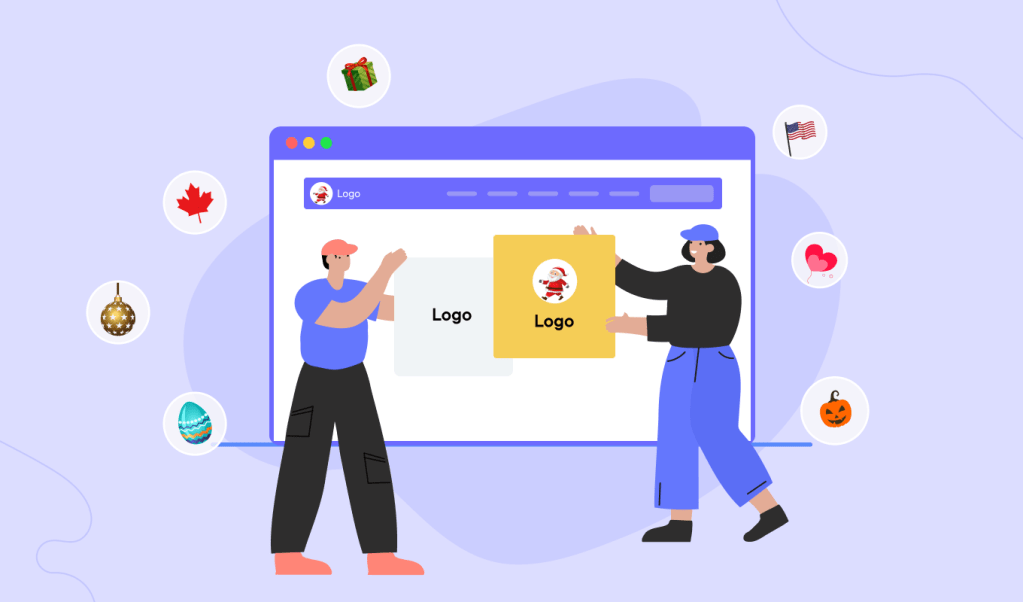
Multidots Doodle is a smart WordPress plugin that automatically updates your site’s logo to match special occasions, festivals, or events, keeping your brand lively and relevant all year round.
How to Choose an Enterprise WordPress Agency That Actually Delivers

Key Takeaways
- Don’t fall for shiny tech: The best partners talk SLAs, rollback plans, and response times first because that’s what keeps your site alive after hours, not the latest JavaScript framework.
- Plan past launch: Ask for full TCO modelling – licensing, staffing, CDN overages, the lot. Hidden costs love to show up when the champagne’s gone flat.
- Audit discovery like your launch depends on it… because it does: Demand a 2–4 week discovery phase with RACI charts, QA gates, and written change controls built in. Agencies that skip the tough questions in discovery inevitably pay for it in delays later.
- Look for operational excellence: Pick the team that shows you monitoring dashboards, escalation paths, and incident playbooks, not just glossy portfolios.
- Test their partnership muscles, not just their pitch deck: Ask for year-two support models, named account leads, and real-world case studies where they carried risk, not just shipped code. True enterprise partners prove they’ll still pick up the phone long after launch day.
Enterprise WordPress migrations tend to go one of two ways: smooth, scalable, and stress-free – or chaotic enough to make you question every decision that led here.
The difference? How well you pick your agency partner.
That choice decides whether you’re celebrating a 65% performance boost or explaining why the site crashed mid–Black Friday. And yes, the stakes are that high.
Tidy $10k projects can swell to $50k after agencies upsell flashy headless builds nobody asked for, while marketing teams wait months (and $225 an hour) for the simplest updates.
In this guide, we’ll strip away the sales fluff and get to what matters:
- SLA checkpoints that keep you from crashes and late-night fire drills.
- TCO models that flag year-two costs before they ambush your budget.
- Stack selection frameworks built for editor freedom, not developer showboating.
Let’s dive in.
What Enterprise WordPress Means
Do Large Enterprises Use WordPress?
Yes. Heavy hitters like Sony, NASA, and the White House run mission-critical sites on WordPress. Universities handle millions of visits each month with Redis object caching and layered CDNs keeping performance tight. And media giants like Time Magazine and CNN rely on WordPress multisite to manage large editorial teams, complete with custom workflows and finely tuned permissions.
The real divide between standard and enterprise is not the CMS itself, but the operational muscle wrapped around it.
Enterprise WordPress is a different beast entirely – but the real distinction lies in the hosting:
- Uptime: 99.95% minimum, backed by automated failover systems.
- Incident response: Sub-hour fixes with always-on support teams.
- Traffic: Globally distributed, served fast through edge caching and geo-redundancy.
While standard WordPress runs happily on shared hosting and quick decision-making, enterprise setups rely on providers that deliver dedicated infrastructure, change boards, and structured deployment cycles. The scale is staggering – WordPress VIP alone pushes out billions of page views every month.
The Cost of Enterprise WordPress
Launching Enterprise WordPress isn’t pocket change. Year one can easily land in the low six-figure range or more, split across:
- Platform migration: low six-figure range or more depending on content volume and complexity.
- Infrastructure setup: depends heavily on scale, but cloud, CDNs, logging, monitoring, and redundancy can easily run into tens of thousands.
- Annual hosting: Starting from $25,000 for WordPress VIP.
- Ongoing support: $25,000–$75,000 for maintenance and optimization.
Still, a few costs have a sneaky way of creeping in:
Staffing up can add another six-figure sum a year – someone has to wrangle plugin updates, patch security, and keep performance sharp.
CDN overages during traffic surges can rack up thousands monthly. And those “just-in-case” support retainers aren’t cheap if you want guaranteed response times.
The honest picture: by year two, many enterprises spend as much as they did on setup. The smart ones plan ahead – budgeting for dedicated WordPress talent, ongoing optimization, and steady capacity growth from day one.
But stack all this against proprietary giants like Adobe Experience Manager and WordPress comes out around 35–50% cheaper overall.
Should Enterprises Go Headless for Performance?
In a headless WordPress setup, the platform supplies content via APIs while a separate frontend framework handles the site’s display.
Although headless WordPress might sound like the sleek, futuristic upgrade your stack’s been waiting for, it only earns its 2–3x price tag in very specific cases. We’re talking multi-channel setups spanning apps, kiosks, and anywhere else your content lives, or ultra-dynamic interfaces that need lightning-fast state changes. For the other 90% of enterprises, a well-cached traditional WordPress setup delivers far better ROI.
Plus, the upkeep is not for the faint-hearted. Headless means hiring JavaScript devs, managing dual deployment pipelines, and wrestling with caching configs that make your ops team twitch. That neat $50k build quickly balloons to $150k once you factor in API babysitting and frontend updates.
Meanwhile, traditional WordPress paired with enterprise caching (Varnish, Redis, CDN etc.) can still hit sub-second load times and keep your marketers moving without calling in devs. So save headless for when you truly need an omnichannel setup, not for performance problems that good caching can fix for a fraction of the spend.
How Enterprise Agencies Ship on Time
Discovery Phases That Prevent Scope Creep
Enterprise projects usually collapse when discovery skips the tough questions. It’s why the best agencies block out time to map business goals to technical architecture before anyone touches a keyboard – smart insurance against the kind of scope creep that turns a 3-month build into a 9-month saga.
Key discovery deliverables include:
- RACI matrices that spell out who signs off on design, content, and tech decisions.
- Change control processes that demand written approval for anything beyond the brief.
- QA gates at design, dev, and pre-launch to catch issues early.
Seasoned teams document edge cases upfront: What if traffic suddenly triples? How do we manage 50,000 product imports? Who approves emergency fixes? This groundwork is why experienced partners deliver on time – while others drown in revisions.
Support Structure
Typical tiers for managed enterprise support include:
- Business hours: 9–5 coverage with 4-hour response SLAs.
- 24/7 Premium: Continuous monitoring and 15-minute response times.
- Dedicated teams: Named engineers who already know your setup.
Escalation paths keep chaos contained when your site serves millions. Level 1 tackles updates, Level 2 handles performance snags, Level 3 steps in for architecture tweaks. Critical incidents? Cue the all-hands protocol and direct vendor escalation.
Every SLA should spell out response time (acknowledgment), resolution time (fix deployed), and severity levels. For mission-critical sites, define your on-call rotation now – because midnight isn’t the time to find out who’s answering.
Your Enterprise WordPress Decision
What Should I Look for When Hiring an Enterprise WordPress Agency?
Enterprise-ready agencies prove their worth in four ways:
- Migration methodology: They have documented processes tailored to your platform (AEM, Sitecore, Drupal), complete with step-by-step workflows and risk mitigation plans.
- Operational partnership model: Real partners don’t vanish post-launch – they offer long-term support with dedicated account teams and quarterly business reviews.
- Performance achievements: Look for hard data like “cut load time from 5 to 1.2 seconds” or “supported 10 million monthly visits with zero downtime.”
- Scale-matched references: Prior clients should mirror your industry, traffic, and technical complexity.
The line between vendor and partner? Vendors deliver assets; partners shoulder risk. They bring playbooks, not platitudes. They talk year-two realities before the ink’s dry. And their proof comes from migrations that actually worked, not just slick portfolios.
Questions to Ask Potential Partners
Forget the pitch deck – these questions expose the real operators:
- How do you set up sites to handle traffic spikes?
Look for specifics – tools used, response time, and how clients were kept informed. - Show your QA checklist for enterprise deployments.
A serious agency will have a comprehensive list of checks spanning performance, security, accessibility, and SEO. - How do you handle rollbacks when issues occur?
Expect automation, recovery targets, and zero panic. - What happens after launch?
You want to hear about documentation, knowledge transfer, and a gradual handoff. - Who owns performance if the site slows down?
There should be SLAs that define exactly who fixes what, and how fast.
Vague answers? That’s code for “we haven’t done this at scale.”
Advanced Vetting Questions
Ask these to separate experienced agencies from pretenders:
Walk me through your typical migration timeline, week by week.
Look for: Detailed phase breakdowns, specific deliverables per milestone, buffer time for QA, content freeze windows, and rollback triggers.
What’s the biggest migration that went wrong, and how did you fix it?
Honest agencies admit failures and show what they learned. Evasive answers mean they’re hiding inexperience.
How do you handle SEO during migrations?
Expect: 301 redirect mapping, canonical URL preservation, structured data migration, and pre-launch crawl audits.
Show me your content migration error handling process.
You want: Automated validation scripts, checksum verification, broken link detection, and media integrity checks.
Team Structure and Continuity:
Who specifically will be on my team, and what’s their retention rate?
High turnover means you’ll constantly re-explain requirements. Stable teams mean institutional knowledge sticks.
How do you handle team member departures mid-project?
Mature agencies have documented handover processes and backup resources.
What percentage of your team is full-time vs. contractors?
Contractor-heavy shops struggle with quality control and knowledge retention.
Can I meet the actual developers before signing?
If they say no, you’re getting staff they haven’t assigned yet.
Technical Debt Management:
How do you handle plugin selection and vetting?
Look for: Security audit processes, performance impact testing, update compatibility checks, and fallback plans.
What’s your approach to custom code vs. plugin usage?
Balance matters – too much custom code creates maintenance nightmares; too many plugins create security risks.
How do you document custom functionality?
Code comments aren’t enough. Expect architectural decision records, API documentation, and runbooks.
Performance Optimization Specifics:
What’s your typical improvement on Core Web Vitals?
Concrete numbers matter: “LCP from 4.2s to 1.1s” beats “significant improvements.”
Show me your performance optimization checklist.
Should cover: image optimization, lazy loading, critical CSS, JavaScript deferral, database query optimization, and caching strategies.
How do you handle performance regression?
Automated performance budgets in CI/CD pipelines prevent slowdowns from sneaking in.
Red Flags That Signal Wrong Fit
Spot these early and save yourself future firefighting:
- Support promises with no SLAs – “excellent support” means nothing without numbers.
- No incident procedures – if they can’t show outage playbooks or escalation paths, run.
- Feature fixation – flashy tech talk often hides weak operational skills.
- Cost opacity – dodging year-two expenses or maintenance costs is a red flag.
- Reference gaps – if they can’t point to similar-scale clients, assume they don’t have them.
The biggest warning is anyone who says the process will be “straightforward” or “easy.” Enterprise WordPress is complex – and anyone worth hiring knows how to handle that complexity, not gloss over it.
Additional Red Flags and Warning Signs
Communication Breakdown Indicators:
- Slow response times during sales process – if they’re hard to reach before they’ve won your business, imagine after
- Different teams for sales vs. delivery – the person pitching isn’t the one you’ll work with
- Vague project ownership – no named technical lead or account manager assigned upfront
- Junior staff leading discovery – senior expertise should be present from day one, not just in the pitch
Operational Maturity Gaps:
- No version control transparency – you should see Git commits, branch strategies, and deployment logs
- Manual deployment processes – enterprise work demands CI/CD automation
- No disaster recovery documentation – ask for their backup and restore procedures
- Lack of security protocols
Partnership Model Evaluation
Long-Term Value Indicators:
Quarterly Business Reviews Should Include:
- Editorial workflow velocity metrics (time from draft to publish)
- Content performance analytics (engagement, conversion rates)
- System health reports (uptime, response times, error rates)
- Security posture updates (patching cadence, vulnerability remediation)
- Capacity planning recommendations (infrastructure scaling needs)
Knowledge Transfer Requirements:
- Comprehensive documentation in your terminology, not tech jargon
- Video training for common editorial tasks
- Written playbooks for common issues
- Scheduled office hours for questions
- Gradual handoff schedule, not a data dump at launch
Ongoing Optimization Commitments:
- Proactive security monitoring and patching
- Regular performance audits and tuning
- Plugin update testing before production deployment
- Quarterly technology roadmap reviews
- Annual infrastructure cost optimization
Cultural Fit Assessment:
Working Style Compatibility: Ask how they handle disagreements between their technical recommendations and your business requirements. Partners find middle ground; vendors dig in their heels.
Decision-Making Speed: Fast-moving enterprises need agencies that can adapt quickly. Ask about their change request turnaround times and approval processes.
Stakeholder Management: Can they present technical concepts to non-technical executives? Request examples of how they’ve communicated project status to C-suite stakeholders.
Migration Expertise Assessment
Migration skill and experience is critical:
- Platform-specific processes: Ask for their migration playbook – it should spell out content mapping, URL handling, and SEO preservation.
- Comparable migrations: Review at least 3–5 examples that match your site’s size and integrations.
- Timeline accuracy: Check how often they’ve hit delivery dates – and why they didn’t, when they didn’t.
- Zero-downtime capability: Confirm their cutover plan includes rollback procedures, DNS switching, and traffic rerouting.
Top agencies are transparent about their methods and even publish migration guides. If they’re cagey, they’re still winging it.
Operational Indicators
Operational readiness shows in the details:
- Incident response documentation: Runbooks for spikes, breaches, and downtime, with clear escalation triggers.
- Monitoring systems: Tools like New Relic, Datadog, or Pingdom, with alert thresholds and client dashboard access.
- Performance optimization: Proven wins on Core Web Vitals, CDN setup, and database tuning.
- Post-launch structure: Defined support tiers, internal training, and a well-stocked knowledge base.
Ask to see their monitoring dashboards or incident logs. True enterprise agencies will show you. The rest will tell you it’s “confidential.”
WordPress VIP Partnership
WordPress VIP is Automattic’s enterprise-grade hosting platform, powering billions of page views every month for heavy hitters like CNN, Salesforce, and Microsoft. A VIP Gold Partnership is the top rung of technical credibility in WordPress – and it’s not handed out lightly.
Hurdles Gold Partners have to clear include:
- Code reviews: Every line is put through VIP’s automated and manual checks.
- Project scale: Minimum $50,000 engagements that prove enterprise-level expertise.
- Support coverage: 24/7 availability with 15-minute response SLAs.
Only about 30 agencies worldwide make the cut – names like Multidots, 10up, Human Made, and XWP – from powerhouse media builds to large-scale e-commerce and corporate platforms. Beyond technical muscle, the partnership means mastery of VIP infrastructure, airtight security practices, and direct escalation routes for responsive support.
How Multidots Can Help Your Enterprise
Our Proven Framework for Enterprise Success
With over 300 platform migrations under our belt, Multidots brings field-tested know-how to every enterprise WordPress build. Our zero-downtime cutover approach has helped global brands move from legacy platforms like AEM, Sitecore, and Drupal – without missing a beat in business operations.
As a WordPress VIP Gold Partner, we help define the standards for WordPress migrations. That partnership gives our clients direct access to VIP support teams, pre-approved code patterns that clear enterprise security reviews, and infrastructure blueprints proven across billions of page views.
Our global delivery model means your site never goes offline – or unattended. With teams working across time zones, we offer genuine 24/7 coverage, not just a voicemail at midnight. When Ask Media Group needed 11 sites migrated in 12 weeks, that around-the-clock support turned a so-called “impossible” deadline into a done deal.
And we don’t stop once you’re live. Our Multicollab plugin – bringing Google Docs-style collaboration to WordPress – shows our ongoing commitment to smoother editorial workflows long after launch day.
Why “1st Class for Less” Works for Enterprises
Enterprise-grade results shouldn’t come with enterprise-sized invoices. Multidots delivers WordPress VIP-level quality at a significantly lower cost than traditional consultancies, thanks to a few smart advantages:
- Global talent leverage: Our India-based center of excellence brings senior expertise without US overheads – and with workflows designed so timezone differences never get in the way.
- WordPress focus: 15 years dedicated solely to WordPress means zero time lost to on-the-job learning.
- Operational efficiency: Processes refined across 300+ migrations help us skip delays and rework.
This is about cutting waste. Our Great Place to Work certification keeps teams stable, so knowledge doesn’t walk out the door. Every engagement is led by senior architects with 10+ years of WordPress experience, not juniors learning on your dime.
The payoff? Publishers like Sneaker News saw performance soar by 80% – while trimming operational costs by 35%.
Partnership Approach for Long-Term Success
Multidots works as your embedded team, not a vendor counting down to project sign-off. Our partnership model delivers sustained value through:
Strategic discovery: Before writing a single line of code, we map your business goals to the technical architecture. This ensures every solution fits stakeholder expectations and platform realities – stopping the kind of scope creep that sinks enterprise projects.
Transparent TCO modeling: Every proposal comes with year-two costs, staffing needs, and maintenance expectations upfront. No “gotcha” budgets or mystery dependencies appearing after launch.
Dedicated team pods: You get a stable crew who know your business inside out – not a revolving door of new faces. That continuity means faster decisions, fewer handovers, and smoother delivery.
Quarterly business reviews: We measure real business outcomes. From editorial velocity and revenue per visitor to Core Web Vitals, we track the metrics that actually move your success forward.
Choose Operational Excellence Over Feature Lists
Operational excellence trumps flashy feature lists every single time. Agencies love to parade React builds and headless buzzwords, but your users care about one thing – sites that load fast, stay up, and don’t hold editors hostage. When things break at inconvenient times, you’ll quickly learn whether your agency’s a true partner or just good at sales calls.
Crisis-proofing starts long before a crisis. Vet agencies by the boring stuff that actually matters: uptime SLAs, response times, and references from clients your size. Slick portfolios are nice; solid documentation keeps the lights on.
Ask for incident runbooks, inspect real SLAs, and call reference clients to confirm the talk matches the walk. Pick partners who stop problems before they happen – not the ones who swoop in dramatically after the damage is done.
Got enterprise WordPress ambitions? Schedule a call with our enterprise team – they can help map your challenges and turn them into a battle-tested plan for reliable, round-the-clock performance.
AI-Powered Migration: How Machine Learning is Revolutionizing Enterprise CMS Migrations
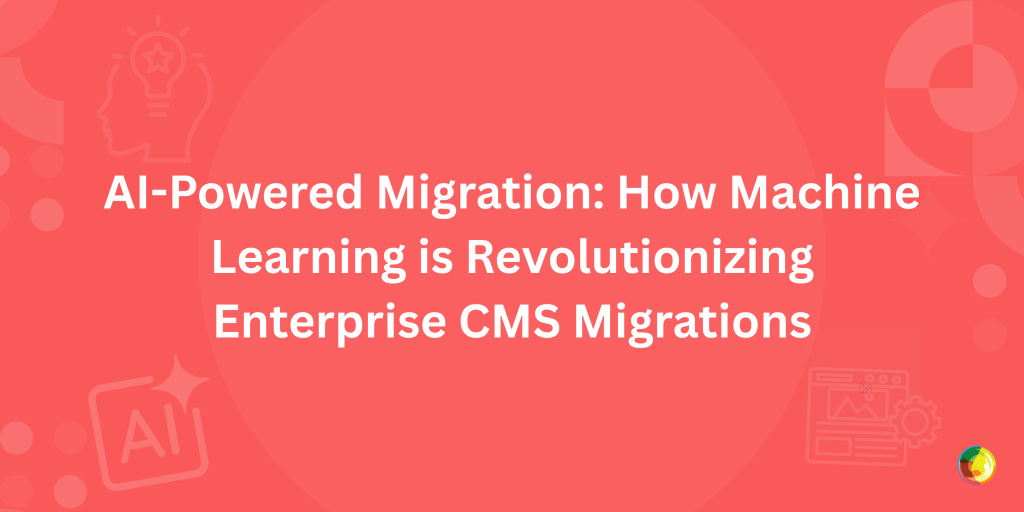
Key Takeaways
- AI Simplifies the Most Complex Tasks: AI makes CMS migrations easier and faster by automating labor-intensive activities like content mapping and data validation, which often cause human errors and project delays.
- Trusted Data Integrity and SEO: AI-driven systems actively identify potential data issues and automatically handle URL redirects, safeguarding your valuable SEO rankings and providing a smooth user experience on the new site.
- Lower Risk and Cost Savings: Replacing manual work with smart automation, AI-powered migration reduces the chance of expensive mistakes, shortens project timelines, and saves time and money.
- A Strategic Partner is Essential: While AI offers powerful tools, the expertise of a strategic partner like Multidots is vital. Our team uses AI to improve migrations, providing a personalized, secure, and successful move for enterprise clients.
Think about a major corporate relocation. You’re not just moving boxes; you’re moving an entire company. You have to ensure every department is accounted for, all critical documents arrive safely, and the new office is set up perfectly for everyone to start working on day one.
A large-scale CMS (Content Management System) migration is much the same. For enterprise-level organizations, it’s a high-stakes transition of your entire digital presence—from millions of pieces of content and user data to SEO rankings that have been built over years.
Traditionally, this process has been a complex, manual, and often painful undertaking.
- The Problem of Scale: Imagine having a website with tens of thousands of pages, each with unique content, formatting, and metadata. Manually mapping and moving all of this is not just tedious; it’s a monumental task fraught with the risk of human error. A single mistake could lead to broken links, lost images, or corrupted data, impacting user experience and, more importantly, your bottom line.
- The Threat to SEO: Your website’s search engine ranking is a result of years of effort. A botched migration can erase that progress overnight. Losing valuable SEO data, like meta descriptions, redirects, and internal linking, is a nightmare for marketing leaders and can cause a massive drop in organic traffic.
- High Costs and Unpredictable Timelines: A migration project on this scale can take months and often goes over budget. The extensive manual labor required for content audits, data cleansing, and quality assurance is both time-consuming and expensive.
For years, the industry has accepted these challenges as the “cost of doing business.” But what if there was a way to make the process more intelligent, faster, and more reliable?
This is where the power of AI comes in. We’re moving from the era of brute-force, manual migrations to a new age of strategic, AI-powered migrations.
Artificial intelligence isn’t just a buzzword; it’s a game-changer that can transform the way enterprises approach CMS migrations, ensuring a smooth, secure, and successful move to a more modern platform.
Beyond the Buzzword: What Exactly is AI-Powered Migration?
When we talk about “AI-powered migration,” we’re not just talking about using a simple script to move files. We’re talking about a fundamental shift in methodology.
Think of it less as a forklift “lifting and shifting” boxes and more like a team of highly intelligent, autonomous agents that understand and organize every single item before it moves to the new location.
At its core, AI-powered migration is a data-driven approach that uses machine learning to automate the most complex and error-prone parts of a CMS transition. It’s about introducing adaptability and context-aware decision-making to a process that has historically been very rigid and manual.
The traditional approach involves a lot of “guesswork and correction,” where teams find a problem, fix it, and hope another one doesn’t pop up.
AI flips this on its head by moving towards “proactive intelligence.” This means the system identifies potential issues before they become a problem and handles them automatically.
This is a critical distinction for CTOs and IT managers. It means less time spent in emergency meetings and more time focused on the strategic value of the new platform. It’s about building a predictable, reliable process that drastically reduces risk and guarantees data integrity.
For a deeper understanding, high-authority sources like PwC note that “AI generally brings a higher level of intelligence and flexibility to data migration…reducing time and effort, and enhancing predictability.” This validates that this isn’t just our idea, but a recognized industry trend.
This intelligence is what transforms a daunting project into a streamlined, efficient, and auditable process.
The Three Pillars of Intelligent Migration (The Multidots Approach)
AI doesn’t solve problems with a single, magic bullet. It’s an engine that powers a series of sophisticated strategies.
At Multidots, we’ve organized our AI-driven migration process around three core pillars. Each pillar addresses a major pain point of traditional migrations, ensuring a comprehensive and secure transition to your new platform, like WordPress.
Pillar 1: Automated Content Mapping
This is often the most labor-intensive part of any large-scale migration. On a legacy CMS like Sitecore, AEM, or even an older version of Drupal, content is structured in a unique way.
Manually identifying and mapping every single piece of content to its corresponding field in the new system is a Herculean effort. It’s also incredibly vulnerable to human error.
The AI Solution: From Unstructured Data to Structured Content
AI addresses this by using Natural Language Processing (NLP) and machine learning algorithms to act as an “intelligent content librarian.” Instead of a human manually looking at a page and deciding if it’s a blog post or a product page, the AI does it at lightning speed.
- Intelligent Content Classification: The AI model is trained to analyze the text, headings, and images of your source content. It can recognize patterns and automatically classify each page as a blog post, a landing page, a team bio, or a case study. This eliminates the guesswork and ensures that every piece of content finds its correct home in the new system.
- Algorithmic Mapping: Once the content is classified, the AI creates an automated, one-to-one mapping plan. It knows to move an “author” field from your old CMS to the WordPress “post author” field and to transfer custom fields like “product price” or “client testimonial” to the correct locations. This level of precision is impossible to achieve manually at scale.
This proactive and automated mapping reduces migration time, cuts down costs, and, most importantly, maintains the integrity and context of your data, ensuring a smooth user experience on the new site.
Pillar 2: Intelligent Data Migration
If content mapping is the blueprint, data migration is the actual move. This is where the risk of losing or corrupting data is highest.
The traditional method often involves creating manual scripts to move databases and files, a fragile process that can lead to broken links, missing SEO data, and corrupted media.
The AI Solution: Proactive Error Detection and Smooth Data Flow
Intelligent data migration is about more than just moving data; it’s about validating and securing it as it moves. Our intelligent systems can perform “health checks” on your data before, during, and after the migration.
- Predictive Error Detection: Think of this as a smart assistant that anticipates problems before they happen. AI algorithms analyze your data for patterns and anomalies. For instance, if a specific type of content has consistently failed to migrate correctly in a test environment, the system can flag it. This allows our team to address the issue proactively, preventing it from causing a widespread problem during the final transition. As noted by Built In, AI mitigates migration issues by “automating key processes, including data profiling, validation, mapping, and anomaly detection, markedly reducing time and effort.”
- Automated SEO Redirection Management: For any CTO, the thought of losing hard-earned SEO rankings is terrifying. When URLs change during a migration, search engines need to be told where to find the new pages. A single misplaced or broken redirect can lead to a massive drop in organic traffic. Our intelligent systems automatically create and manage a comprehensive list of 301 redirects, a critical step that ensures search engines and users are guided to the new URL. This preserves the link equity you’ve built over the years. Research from Moz confirms that using permanent 301 redirects is essential for maintaining SEO value during a move.
Pillar 3: AI-Driven Quality Assurance
After the migration is complete, the work isn’t over. The final stage—quality assurance (QA)—is often a tedious and expensive process.
Manually checking every single page for broken links, visual formatting issues, or missing images is nearly impossible for an enterprise site with thousands of pages.
The AI Solution: A Flawless Launch, Every Time
This is where AI takes over the monotonous work, freeing up human QA teams to focus on strategy and complex testing. AI-driven QA provides a level of certainty and speed that manual testing simply cannot match.
- Comprehensive Automated Audits: Once the site is live, our AI tools can perform a full site crawl. They automatically check for common errors like broken internal links, missing images, and performance bottlenecks. This provides an immediate, detailed report on the site’s health, allowing for quick fixes and a smooth launch.
- Visual Regression Testing: This is a key benefit for marketing and design teams. AI can take a screenshot of a page on your old site and compare it to the same page on the new site, highlighting even the most minor visual differences. This ensures that the design, layout, and user experience are perfectly preserved. Functionize highlights how “pixel-perfect visual regression testing” enables teams to “expand automated test coverage to 90% during a migration.”
- Performance Optimization Suggestions: Our systems can also analyze the new site’s performance and provide actionable recommendations. It might suggest which images to compress or which scripts to defer to improve page load times, ensuring the new site is not only beautiful but also fast and efficient.
Real-World Impact: The Business Benefits for Enterprise Leaders
While the technology behind AI-powered migration is fascinating, the true value lies in the business outcomes. For a CTO, Head of IT, or Marketing Manager, the ultimate goal isn’t a flawless technical process; it’s a smooth business transition.
- Substantial Reduction in Time and Cost: By automating the most labor-intensive parts of the migration, AI drastically reduces the time and manpower required. This translates directly to lower project costs and faster project completion, allowing you to get your new site live and start seeing a return on your investment sooner.
- Minimizing Risk and Eliminating Downtime: The proactive nature of AI-driven systems means fewer errors, which in turn means less risk. A smoother migration reduces the chance of unexpected downtime, data loss, or SEO penalties, protecting your brand reputation and revenue.
- Freeing Up Your Team for Strategic, High-Value Work: When your internal teams aren’t burdened with manual data entry and repetitive QA tasks, they are free to focus on what they do best. They can spend their time on strategic planning, optimizing the new platform’s features, and building a better digital experience for your customers.
- A Future-Proof Solution for Evolving Digital Needs: Migrating to a modern CMS like WordPress with AI-powered tools is a strategic move that sets you up for long-term success. It ensures your foundational data is clean, secure, and ready for future integrations and expansions.
The Multidots Difference: How We Harness AI for Your Success
The rise of AI has led to many automated tools, but true enterprise-level migration requires more than just a script. It requires human expertise and a strategic partner. This is where Multidots comes in.
- Our Philosophy: AI as an Amplifier, Not a Replacement: We don’t see AI as a way to replace our team. We see it as a powerful tool that amplifies their expertise. Our seasoned developers and project managers use AI to handle the heavy lifting, allowing them to focus on complex, custom development and strategic problem-solving.
- Our Custom AI Tooling and Expertise: Our in-house team has developed custom-built AI solutions specifically for large-scale CMS migrations. These aren’t off-the-shelf products. They are bespoke systems designed to handle the unique complexities of enterprise-level data, ensuring a truly tailored and secure migration process.
Conclusion: The Dawn of a New Era in Enterprise CMS Migration
For too long, enterprise CMS migrations have been viewed as a necessary evil—a difficult, risky, and expensive rite of passage. But with the advent of AI, that narrative is changing.
By focusing on automated content mapping, intelligent data migration, and AI-driven quality assurance, the process is no longer a gamble. It’s a predictable, efficient, and strategic business move.
Don’t let the fear of a complex transition hold you back from moving to a modern, powerful platform. Partner with a team that has the expertise and the intelligent tools to make your migration a true success.
Ready to transform your digital presence without the risk? Book your free consultation with Multidots today to learn how our AI-powered migration services can help you achieve a flawless and efficient transition.
What is Enterprise CMS? Key Features Explained

Key Takeaways
- Enterprise CMS = consequence management: You’ve crossed the line when content mistakes cost more than prevention.
- Core capabilities to look for: Governance, workflow automation, compliance, security, multi-site management, and deep integrations.
- Multidots’ enterprise WordPress approach delivers governance and scalability without the overhead of proprietary platforms.
It’s 9 PM, and the marketing director is staring at her inbox. Legal has just flagged a compliance update that needs to hit 200 websites before midnight. The IT queue is already weeks long, and the risk of one wrong click triggering fines or reputational damage is very real. This is the moment many organizations realize they’ve crossed into enterprise CMS territory.
An enterprise CMS is all about consequence management. You’ve entered enterprise territory when a single content error costs more than the systems and processes that would have prevented it. It also means operating on a robust platform built for large-scale content operations—supporting high traffic, many users, built-in scalability, enterprise-grade security, and deep system integrations.
What is an Enterprise CMS?
An enterprise CMS is a content management system that prevents costly errors through governance and automation.
It combines content workflows, developer processes, compliance tools, multi-site control, and integrations to reduce operational risk.
Key Differentiators:
- Centralized Governance: Unified control over roles, permissions, and approvals across every property.
- Automated Workflows: Structured publishing processes that reduce errors and accelerate time-to-market.
- Compliance Tracking: Audit trails, version history, and role-based access control that satisfy regulatory demands.
- Multisite Management: Ability to manage dozens or hundreds of sites from a single codebase or dashboard.
- Enterprise Integrations: Robust APIs and connectors to CRMs, ERPs, analytics, and MarTech platforms.
WordPress vs. Enterprise WordPress: What’s the Difference?
The WordPress software remains the same in both cases. The difference lies in implementation and support infrastructure.
- Standard WordPress: Self-hosted, basic permissions, manual updates.
- Enterprise WordPress: Standard WordPress combined with managed hosting providers (such as WordPress VIP) that deliver compliance certifications, automated security updates, efficient workflows, SLAs, and 24/7 support. On top of this, agencies like Multidots provide custom integrations and long-term maintenance.
Enterprise WordPress keeps the open-source flexibility of WordPress while extending it with enterprise-grade hosting, governance, and integrations for secure, scalable operations.
Enterprise WordPress CMS Security
The myth that “WordPress is insecure” comes from poorly managed, self-hosted sites. In reality, enterprise providers such as WordPress VIP deliver bank-grade security, with zero major incidents to date. That’s why organizations like The White House and Sony Music trust WordPress at scale.
Enterprise Security Checklist:
- FedRAMP-authorized infrastructure
- SOC 2 compliance
- 24/7 threat monitoring
- Automated patching
- DDoS protection
- 99.99% uptime SLAs
Business translation: Lower cyber insurance premiums, faster compliance audits, and zero-downtime deployments.
For CISOs: Every deployment is security-scanned, every plugin vetted, and every user action logged for full audit trails.
Enterprise WordPress hardens security with compliance-grade infrastructure and automated monitoring, eliminating the risks of unmanaged open-source.
The Real Cost of Enterprise CMS
An enterprise CMS provides centralized control, workflow automation, and compliance tracking for organizations managing multiple digital properties – where even a minor error can risk regulatory fines, lost revenue, or lasting brand damage.
Calculating Your Enterprise Threshold
- What’s the real cost of your next content emergency?
- Calculate: Compliance penalties + Emergency developer hours + Downtime losses + Reputational damage
- If this total reaches six figures, you’re already operating in enterprise territory.
The Hidden Costs of Traditional Enterprise Platforms
Traditional enterprise platforms can make these risks worse. Adobe Experience Manager’s Multi-Site Manager (MSM) introduces chained inheritance that slows teams and compromises performance. Sitecore and Oracle CM fall into the same trap: Deeply nested templates that turn a simple banner swap into a full development sprint.
When everyday marketing requests escalate into development projects, the true cost isn’t just licensing. It’s the accumulated expense of specialist developers, delayed campaigns, and the risk that one rushed update destabilizes revenue-generating sites across your portfolio.
Multidots’ AEM-to-WordPress migration guide details these pitfalls and how to avoid them. Yu-Ming Wu, Editor-in-Chief at Sneaker News, reported, “Multidots improved our editorial team’s operational efficiency by 65%.” That efficiency came not from adding more features, but from removing the developer bottleneck entirely.
How Long Does Enterprise CMS Migration Really Take?
Enterprise CMS migrations are rarely quick. While the technical work can be done in as little as three to four months, the real delays come from content audits, governance cleanup, and stakeholder alignment. Left unmanaged, these phases can stretch migrations from weeks into well over a year.
Multidots’ Sitecore-to-WordPress migration guide shows why: Timelines often spiral not because of code, but because of audits, stakeholder approvals, and governance cleanup.
To manage this, Multidots follows a seven-step migration process that surfaces risks early and delivers in a predictable timeframe:
- Strategic content audit (~2 months).
- 301 redirect mapping (~1 month).
- SEO preservation.
- Performance baseline.
- Content migration.
- UX validation.
- Security hardening.
This structure typically lands projects within the 12–18 month window, even when moving from permissive to tightly controlled governance models.
In the Ask Media Group migration, Multidots normalized more than 50,000 legacy posts before launch, eliminating hidden data-quality issues that could have led to expensive fixes later. The project consolidated multiple properties into WordPress Multisite in just 12 weeks – proof that a clear process can deliver speed without sacrificing stability.
Empower Editors With Enterprise-Grade WordPress Workflows
A major part of an enterprise CMS is the enhanced workflows and efficiency it brings to your team, ensuring editors and stakeholders can work faster and with fewer bottlenecks once the migration is complete.
With Multicollab, editors gain Google Docs–style collaboration inside WordPress: Real-time editing, inline comments, and approval workflows. Legal reviews happen within the CMS – not in endless email chains.
Enterprise WordPress removes those bottlenecks, giving editors back the speed and autonomy they need.
When Do You Need an Enterprise CMS?
If your bottlenecks stem from missing workflows or unclear responsibilities, implementing better processes may be enough to resolve them.
But when the risks of content errors, multi-site sprawl, compliance obligations, or integration gaps exceed what process tweaks can manage, it’s time for a full enterprise CMS.
Choose enterprise CMS when content risk, scale, or compliance requirements demand governance and control beyond what improved processes alone can deliver.
Make sure to ask the questions that actually matter:
- How many times did marketing wait for IT last month?
- What percentage of your CMS features do you actually use?
- Could you realistically switch platforms in under 18 months if needed?
Enterprise CMS is less about company size than risk management.
A 50-person healthcare startup handling sensitive data may need more governance than a 5,000-person retailer. The right choice depends on your risk profile, editorial velocity, and integration needs, not headcount.
Multidots: Your Low-Risk Path to Enterprise WordPress
Multidots has delivered 300+ enterprise migrations and is a WordPress VIP Gold partner. That means you get proven methods and enterprise-grade support – without being trapped in a closed platform.
And with our seven-step migration process, legacy issues are surfaced early, so projects land inside the typical 12–18 month window with measurable performance gains.
Hundreds of enterprises have already made the switch. Get in touch with Multidots for a tailored assessment today!
Beyond the Build: Our Strategic Approach to Digital Partnerships & The Power of OKRs

Key Takeaways
- Strategic digital partnerships drive success beyond just website development.
- Continuous discovery aligns solutions with business goals and audience needs.
- Planned sustainability ensures long-term performance, security, and ROI.
- OKRs provide a framework to measure impact and guide digital strategy.
At Multidots, we’ve learned that true digital success isn’t just about flawless execution; it’s about becoming a deeply integrated strategic partner for our clients. This approach, driven by a philosophy of problem-solving and innovation, ensures we deliver more than a product. We deliver lasting value and maximize return on investment (ROI). We don’t just build websites, we craft digital success stories.
Our strategic framework is centered on four core principles that guide our every interaction and decision.
1. Continuous Discovery and Strategic Alignment
For us, discovery is not a single phase at the start of a project; it’s an ongoing process of actively seeking to understand our clients and their business. We ask the tough questions, delving into business goals, audience needs, and market conditions to ensure every recommendation is strategically aligned for maximum impact. This proactive approach allows us to act as an indispensable partner, offering a holistic perspective on how our work will increase revenue, improve efficiency, and justify the investment.
2. Seamless Integration
From planning to execution, we focus on seamless integration to anticipate potential conflicts and ensure our work provides measurable value. We work collaboratively with your team to establish clear, tangible metrics for success, such as impact on conversions, revenue, or user experience. By sharing our expertise and integrating with your existing products, we ensure our solutions are not only technically sound but also strategically coherent, providing data that proves the value of our recommendations.
3. Planned Sustainability
Our commitment extends far beyond launch day. We design for long-term health and success, building a clear plan for updates, upgrades, and performance reporting. This focus on sustainability empowers our clients by giving them ownership of their digital experience and deepening their engagement in the partnership. We prioritize tasks based on what’s most important to you—be it performance, user experience, or security—to ensure our work delivers lasting value.
4. Innovation as a Mindset
Innovation isn’t just for the creative team; it’s a human-centered approach to problem-solving that everyone at Multidots embraces. We apply the principles of design thinking to everything we do, from deep empathetic listening to rapid prototyping and learning from failure.
- Empathy: We believe true understanding comes from deeply engaging with our clients as people, not just as a business entity. This means connecting on a human level—sharing stories and finding common ground to foster a deeper rapport and uncover new opportunities for innovation.
- Problem-Solving: We reframe every challenge as “us versus the problem” to minimize conflict and foster a collaborative environment focused on finding mutually beneficial solutions. We believe we can solve 100% of the problems we know about, and our culture of radical candor ensures we are always transparent and honest, even when the conversations are difficult.
- Prototyping & Testing: We rapidly test ideas by “building to think” instead of “thinking to build”. This iterative process allows us to continuously refine our solutions and deliver maximum value while mitigating risk early on.
By embracing these principles, we elevate every interaction from a transaction into a meaningful collaboration. At Multidots, our goal is to become an indispensable extension of your team, leveraging our expertise to help you not only meet your goals but truly thrive in the ever-changing digital landscape. We’re big enough to tackle your thorniest challenges, but still small enough to care about you and your success.
This strategic approach is how we move beyond the role of a traditional service provider. We become a part of your team, deeply invested in your success. This is where our values of service, ownership, craftsmanship, and creativity truly come to life, transforming every project from a transactional task into a strategic, value-driven partnership.

Using empathy mapping, Multidots will help define personas of interest and keep their sentiments top of mind as we shape recommendations for features, functionality, and user experience.
The Power of OKRs in Your Strategic Partnership with Multidots
When you engage with Multidots, you’re not just hiring an agency; you’re gaining a strategic partner committed to your long-term success. Our approach is anchored in a deep alignment with your business goals, and we aim to achieve this through the use of Objectives and Key Results (OKRs). This framework can serve as our compass, helping to ensure every recommendation and action we take is purposeful, impactful, and directly connected to what matters most to you. This level of partnership thrives on commitment from both our clients and our team, as the success of this framework depends greatly on a strategic mindset from both sides of the partnership.
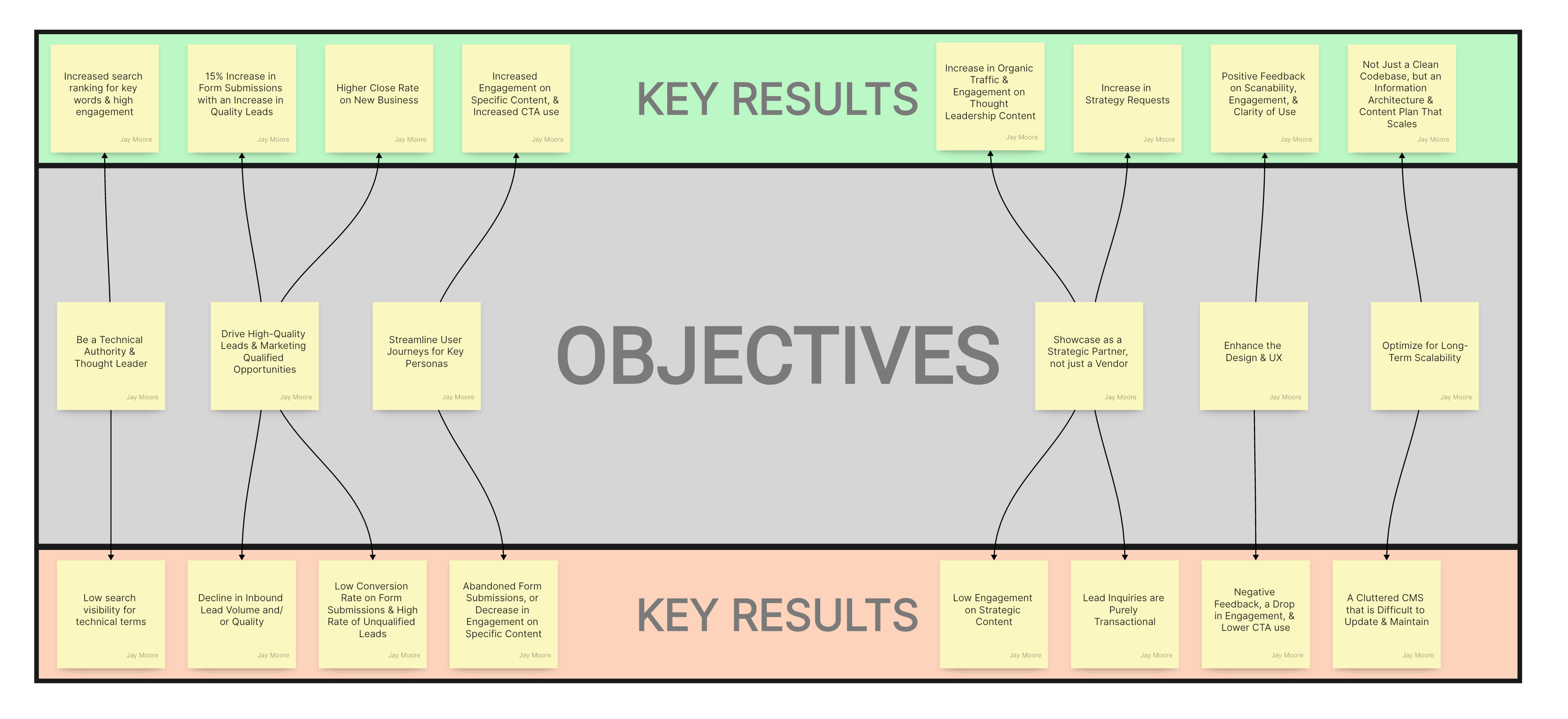
OKRs ensure our teams keep your most important goals and objectives top of mind, and defining both positive and negative key results gives us a clear understanding of when to keep going, or when to take a turn.
OKRs as Our Strategic Compass
We believe that a successful partnership starts with a shared vision. Objectives and Key Results can provide the perfect mechanism for this. Your Objective is a clear, qualitative statement of a strategic destination—it’s where your business wants to go. Your Key Results are the measurable, quantitative metrics that can tell us whether we’re on the right path.
For us, these are not just corporate jargon. They can be the guardrails and waypoints of our shared journey. They can help keep us focused on what’s truly important, preventing us from getting lost in minor tasks or distractions. Every project, big or small, has the potential to become a step toward a measurable outcome that fuels your growth. Our team will consistently explore ways we can help to provide solutions to your problems by understanding the areas of your workflow causing bottlenecks, the opportunities within your markets we can help you leverage, and the user journeys making the most impact within your organization. We don’t just have a workshop; we build this into our working model in a way that forces us to look backwards to move forward, and to develop a roadmap of sustained momentum.
Our Process: Anchoring Work to Your Success
From day one, our team will work to understand your OKRs. We don’t just ask about your technical needs; we ask about your business goals:
- Discovery Beyond the Checklist: Our discovery process is continuous. We dive deep to understand the “why” behind every request, seeking to grasp the business impact and how it may affect your stakeholders and revenue.
- Recommendations as a Roadmap: When we propose a solution, we don’t just explain what we’ll build. We aim to show you how it aligns with your key results. For example, a content strategy isn’t just about blog posts; it’s a plan to increase organic traffic by a specific percentage, directly supporting a key result related to audience growth.
- Prioritization for Maximum Impact: OKRs can empower us to make smart decisions about where to focus our energy. If a task doesn’t contribute to a key result, we’ll discuss its value and reprioritize to help ensure our collective efforts are always generating the most significant impact.
By anchoring our work to your OKRs, we can transform our partnership into a collaborative journey. We can continuously check our progress against these waypoints, celebrate our shared successes, and learn from challenges together. This approach can help ensure that every dollar you invest and every hour we work is driving you closer to your ultimate business objectives.
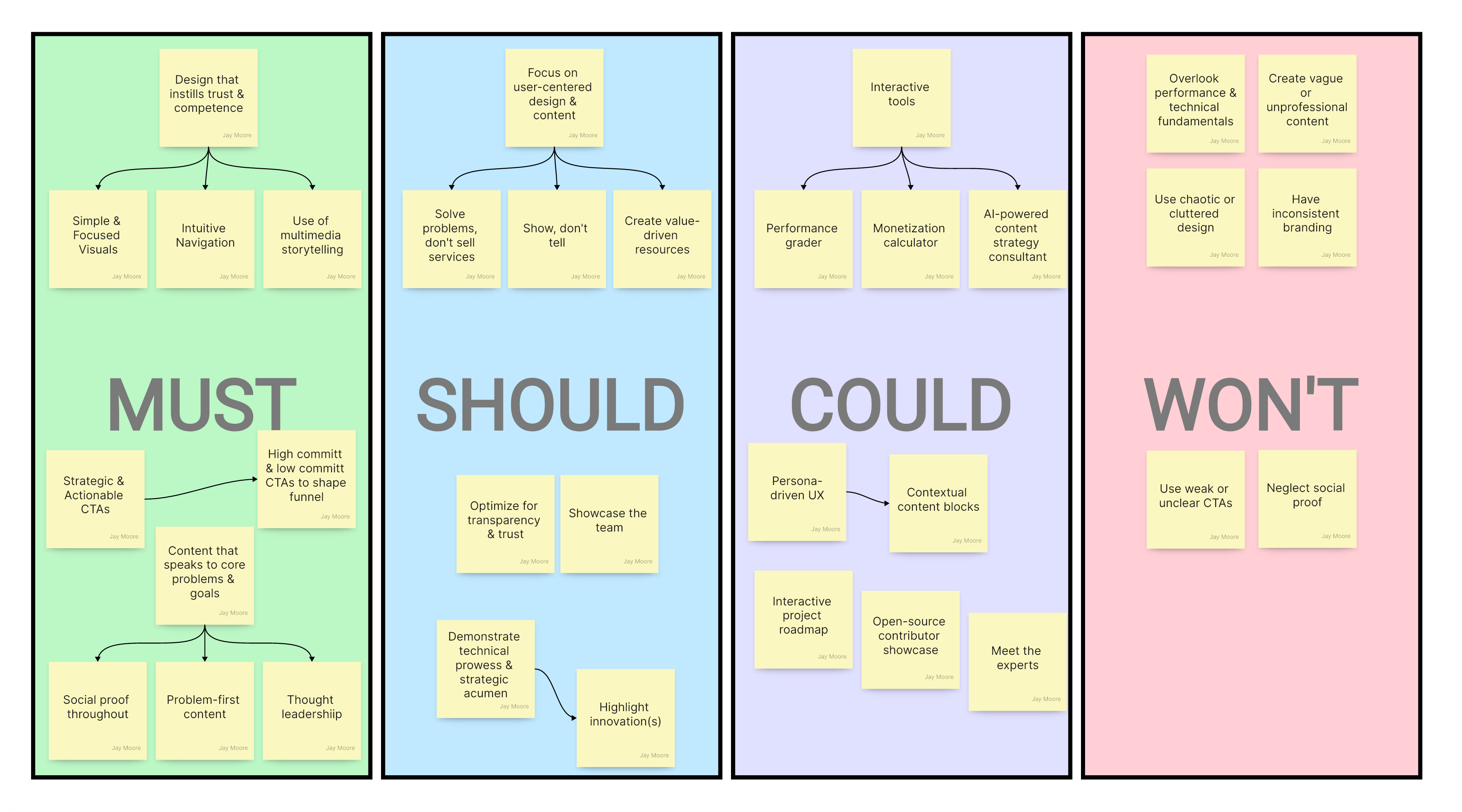
Once we are aligned with our target audiences, and OKRs, we will operate within a Must, Should, Could, Won’t framework in order to continue advancing your product in the most impactful ways while keeping innovation in focus.
Ready to Build Your Digital Success Story?
If you’re looking for more than just a vendor, if you’re ready for a true partner who is invested in your long-term success, then we’d love to talk. Our team is ready to dive into your business goals, help you define your OKRs, and show you how our strategic approach can maximize your digital investment.
Let’s start a conversation about how we can transform your next project into a journey of purposeful growth.
Contact us today to talk strategy, not just scope.
Setting Up WordPress Multisite Development Environments
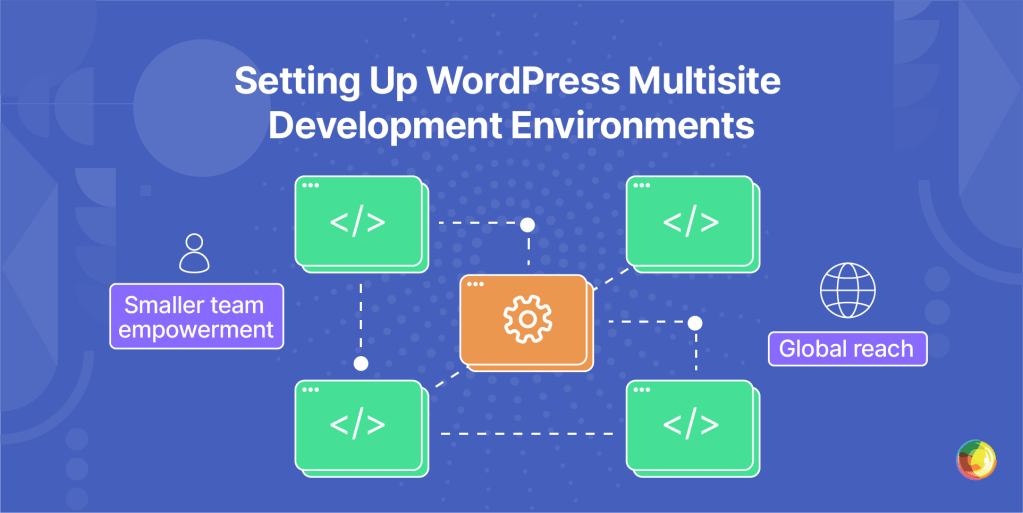
Key Takeaways
- Build with exit strategies first. Every site should be extractable in under two hours.
- Lock in domain mapping early. Use Docker wildcard SSL + proper mapping to avoid localhost-to-production meltdowns.
- Automate extraction. Run containerized environments with WP-CLI scripts to turn months-long ordeals into routine jobs.
- Test smart, not broad. Use staging pipelines on a site subset to keep maintenance windows calm instead of chaotic.
- Design for containment. Using architecture patterns that limit blast radius makes Multidots’ 11-site migrations possible through design, not heroics.
WordPress Multisite sells you on the dream of one dashboard to rule them all. But that dream cracks fast when localhost tanks on staging. Suddenly, you’ve got blank screens breeding like rabbits, SSL errors firing off in sequence, and cookie clashes locking out editors. With one bad deployment, you can have 12 client sites down in one go.
The real line between smooth sailing and total chaos is your development environment. Build it from day one for rollbacks and blast-radius control, and that single point of failure becomes a speed bump, not a cliff edge.
A rock-solid WordPress Multisite lives or dies on rollback hygiene and tenant isolation: ship behind feature flags, automate one-click reverts, and trace errors per site, not per server. Follow the checklist below to put those guard-rails in place yourself, and if you’d rather never hold the pager, Multidots can do it for you.

In this guide, we’ll dig into the Docker configs, domain mapping fixes, and extraction scripts that turn Multisite from liability to a dependable workhorse.
WordPress Multisite Setup Prerequisites & Infrastructure Checklist
WordPress Multisite is a built-in feature that lets you run and manage multiple websites from a single WordPress installation. With a single hub for themes, plugins, and core updates, it’s your control tower for managing a whole network without juggling endless dashboards.
Each site can use its own domain or subdomain, with unique content and settings. Users, however, live in shared global tables (wp_users and wp_usermeta). Roles are scoped per site, so the same login travels across the network e.g., Jane in marketing might be an editor on the blog but only a contributor on the product site.
But the real win is maintenance at scale. Update WordPress, roll out a plugin, or patch a vulnerability once, and it covers every site in the network. No more 3 AM patch marathons across 20 installs. One update = problem solved.
Hard Prerequisites (Must-haves)
Before enabling Multisite, it’s essential to take a full backup or start from a fresh WordPress install. The setup process modifies both the wp-config.php and .htaccess files, so preserving your current state is critical. One misplaced semicolon in wp-config.php can take down your entire network faster than you can say “white screen of death.”
Here are a few crucial details that can catch many developers off guard:
- By default, WordPress requires subdomains if the site is older than 30 days (
site1.example.com). - For sub-directories (
example.com/site1), start with a brand-new install. - Workaround: set
SUBDOMAIN_INSTALLto false inwp-config.php(advanced; may cause errors).
However, this workaround is an advanced method that may trigger errors and require manual troubleshooting. Proceed with caution if you go this route, and maybe have a stress ball handy.
DNS & SSL Requirements:
Your domain and security setup needs to be bulletproof before you proceed. Here’s what that looks like in practice:
- Sub-domain networks: You’ll need a wildcard A/AAAA record plus a matching wildcard certificate (e.g.,
*.example.com). That way, every new site gets SSL automatically. - Sub-directory networks: One root DNS/SSL does the trick. A single cert covers all your
/site1, /site2paths.
Database Permissions:
Your DB user needs CREATE, ALTER, and DROP permissions. Miss one, and setup fails quietly, leaving you staring at errors for hours.
PHP Configurations:
For smooth WordPress Multisite operation (especially during migrations), treat these PHP minimums as non-negotiables:
- memory_limit: 128MB+ (256MB recommended).
- max_execution_time: 300+ seconds to avoid timeouts.
- max_input_time: Raise if importing hefty XML/CSV files.
Tweak them in php.ini or your hosting panel. If your host won’t budge, find one that will.
Essential System Access
Miss these and you’re building on sand:
- File system access:
wp-contentand root must be writable for uploads and.htaccessupdates. - WordPress version: Multisite’s been around since WordPress 3.0, but modern plugins demand 5.0+.
- .htaccess/NGINX conf writable: Needed for rewrite rules during setup.
Always run the latest stable release (currently 6.8). It keeps things secure, compatible, and your security team off your back.
Sub-domains vs Sub-directories: How to Choose
This call shapes CDN, SSL, SEO – basically everything. Here’s what matters:
Key Technical Factors:
CDNs cache by scheme + host + path.
/blog (brand.com/blog)shares the same host as the homepage so benefits from existing cached objects= higher hit rates, lower egress costs.blog.brand.comis a new host = cache misses on first request.
Modern CDNs can normalize cache keys, but you’ll need custom rules and someone who knows how to write them.
SSL Management:
- Wildcard SSL (
*.brand.com) covers all subs, saving you from juggling dozens of certs. - Renewal automation still needs DevOps care.
- Sub-directories? One cert, and simpler management.
SEO and Authority:
Google connects subs to root, but sub-directories usually inherit equity faster due to cleaner internal links, consistent crawl budgets, and fewer redirect traps. WordCamp case studies back it up.
Site Extraction:
- Sub-domains are easier to peel off.
- Sub-directories mean trickier search-replace ops and complex redirects.
Dev Environments:
- Sub-domains = wildcard DNS or endless host entries.
- Sub-directories = localhost-friendly, no fuss.
- Login quirks: sub-dirs share cookies/admin bar by default; subdomains can also share login if
COOKIE_DOMAINis configured correctly, though misconfigurations may trigger cookie conflicts.
Choose sub-domains when:
- Each site needs strict isolation (branding, compliance, CI/CD).
- Independent teams deploy separately.
- Spinoffs or site sales are likely.
- You’re enabling Multisite on a site >30 days old (installer defaults to sub-domain).
Choose sub-directories when:
- You’re starting fresh (or under 30 days in).
- Preserving SEO equity is critical.
- Users must stay logged in across subsites.
- You want simpler SSL, DevOps, and localhost dev.
- All subs share one design system.
Best Practices for Multisite Development
Command Line Mastery: SSH/SFTP and WP-CLI turn hours of clicks into seconds of commands. A single wp plugin update --all --network handles updates across every site. Skip CLI access, and you’re working with one hand tied behind your back.
Development Workflow Essentials:
- Git branch protection on your network/main branch stops cowboy deployments.
- Local environments with LocalWP’s Multisite mode or Docker-Compose with domain mapping.
- Staging environments on Kinsta, or Pantheon, because testing in production is asking for trouble.
Governance That Actually Works
Define roles before spinning up subsites. Super Admins own network-wide changes; Site Admins stick to content. Set plugin approval workflows and run quarterly audits to catch privilege creep.
Build Your Escape Route
Keep WP-CLI extraction scripts handy and run quarterly drills. Two hours to extract a site is infinitely better than “can’t be done.” Your future self will thank you.
Monitoring & Backups
Daily automated backups (database + files) off-site. Resource monitoring with alerts. Uptime checks for each site. When one update can break 50 sites, redundancy is survival.
Keeping WordPress Multisite Environments in Sync: From Laptop to Live
More Multisite projects crash between localhost and production than from any technical limit. When sub-domains behave on your laptop but blow up on staging, the culprit isn’t WordPress – it’s mismatched environments. Here’s what to do.
- Docker-Compose blueprints: Match production PHP/MySQL/Nginx versions exactly – grab our tested configs for both sub-domain and sub-directory networks.
- Wildcard SSL fixes: Proper certificate handling ends the “works locally, dies on staging” saga.
- Domain mapping that actually works: Traefik routing + dev-wildcard DNS keeps URLs identical everywhere.
- Cookie-domain configuration: Set explicit
COOKIE_DOMAINvalues to stop those maddening authentication loops.
For CMOs and business leads, mismatches can turn launch day into a brand crisis. A site that hums in dev but tanks in production damages trust instantly. Customers rarely give second chances, and they’ll warn others.
Reversibility-First Architecture:
If you can’t tear it down, you shouldn’t build it. At Multidots, our migration scripts can extract single sites in minutes because reversibility is woven in from day one.
5-Step Implementation Plan for Midsize Networks:
| Day | Focus | Checkpoint |
|---|---|---|
| Step 1 | Spin up parity stack (Docker-Compose mirrors production PHP + MySQL) | Multisite Network Setup wizard loads at localhost with no build errors |
| Step 2 | Fix domains & SSL (wildcard cert + Traefik / hosts entries) | Every sub-site (*.test) shows green-padlock HTTPS, no cookie warnings |
| Step 3 | Align staging URLs (wp search-replace across the network) | All subsites load on staging domains without mixed-content or set-cookie errors |
| Step 4 | Prove reversibility: export one sub-site | Extracted SQL/XML imports cleanly into standalone WordPress + documented “escape plan” with WP-CLI scripts for <2 hour decoupling |
| Step 5 | Harden & launch (Redis namespace + blue-green swap) | Smoke-test passes on “green” stack; DNS/CNAME flip completes in under 60 seconds |
This systematic approach transforms Multisite from a high-wire act into a predictable, repeatable process.
Enterprise-Grade Security and Performance Controls for WordPress Multisite
Running Multisite at enterprise scale means locking down security and performance so one bad day doesn’t take the whole network with it. These proven patterns turn “single point of failure” into “contained, manageable blip.”
Blast-Radius Containment
When things go wrong – and they will – the right architecture stops trouble from snowballing.
Automated Sub-site Quarantine and Rollback:
- Health-check scripts watch each tenant (
wp_23_*) for early signs of failure. - One-click rollback brings just the affected site back online in under 5 minutes.
- Quarantine stops bad code from spreading during auto-updates.
Database-Level Security Boundaries:
- Table-prefix firewalls lock each tenant to their own DB prefix (
wp_23_%). - Breaches stop cold at the prefix edge.
- Per-site DB users mean stolen credentials only hit one tenant.
Authentication Surface Hardening:
- Fail2Ban (Apache) or
limit_req_zone(nginx) throttle/wp-login.phpto 5 requests/minute. - Rate limiting stops brute-force without blocking legitimate editors.
- Network-wide 2FA adds a universal extra lock.
SSL Certificate Management:
- Sub-domain networks: wildcard certificates with auto-renew (Let’s Encrypt / Cloudflare Origin CA).
- Sub-directory setups: single certificate with tight SameSite cookie handling.
- Expiry monitoring saves you from the “Your connection is not private” fiasco.
Traffic Surge Isolation:
- Per-site Redis namespaces avoid cache key clashes between busy and quiet sites.
- Dedicated PHP-FPM pools keep viral posts from hogging CPU.
- cgroup limits + nginx rate limiting set hard per-tenant boundaries.
- Separate CDN cache keys ensure one site’s spike doesn’t wipe another’s cache.
Rapid Recovery
You can’t avoid every failure. You can ensure you bounce back fast. These patterns get you online again in record time.
Blue-Green Deployment Architecture:
- Push updates to “blue” while “green” handles live traffic.
- Run smoke tests on blue before the switch.
- CNAME flip takes under 60 seconds – instant rollback if needed.
- Zero downtime for WordPress core, theme, and plugin updates.
Centralized Zero-Downtime Patching:
- Nightly cron jobs run
wp plugin update --all --network, patching fleets in minutes. - Staged rollouts test on a subset before going network-wide.
- Automated compatibility checks stop breakages at the gate.
- Closes the “one unpatched plugin” gap that can threaten enterprise networks.
Granular Backup and Restore Capabilities:
- Prefix-scoped SQL exports restore a single site without touching the rest.
- Automated backups to S3/Google Cloud with 30-day retention.
- Quarterly drills prove any site can be decoupled in under 2 hours.
- Point-in-time recovery ticks every compliance and reversibility box.
Proactive Prevention and Monitoring
Spotting trouble before users do is the difference between smooth sailing and damage control.
Advanced Observability Stack:
- Query Monitor metrics feed Prometheus/Grafana for live performance tracking.
- Alerts when P95 query times top 300ms – autoscaling kicks in before peaks.
- Dashboards track per-site resource use, flagging problem tenants early.
- APM integration offers code-level visibility.
Stability-First KPIs:
- Track “incident-free days” over chasing tiny speed wins.
- Monitor “editor-lockout events” so publishing never stalls.
- Measure “time-to-recovery” for all incident types.
- Balance speed metrics with user-experience indicators.
Business Impact, Tailored to Every Persona
For DevOps Engineers: Automated isolation and self-healing systems mean no urgent calls about one rogue plugin taking down fifty sites.
For Agency Technical Leads: Client sites stay separate, so one spike or breach can’t tank your portfolio’s reputation.
For Enterprise Web Managers: Audit-ready controls keep compliance happy without slowing releases. In a climate of low trust, visible security wins consumer confidence and protects brand equity.
These principles are straight from Multidots’ playbook for managing hundreds of enterprise Multisite networks. The right architecture slashes incidents, speeds recovery, and keeps stakeholder trust rock-solid.
Governance for Your WordPress Multisite Investment
Multisite governance is the disciplined mix of shared policies, role assignments, and operational controls that keeps every site in a network secure, fast, on-brand, and compliant, while still letting sub-site teams run their own show.
Role-Based Access Control:
A three-tier permission stack (Super Admin → Site Admin → Dev Access) keeps duties clearly separated:
- Super Admins: network-wide settings, plugin activation, and user management.
- Site Admins: content, design, and site-specific users.
- Developers: staging-only access.
This setup nails SOX and GDPR role-based access control (RBAC) compliance while keeping teams efficient.
Marketing and Business Impact:
- Speed to market: Governed workflows launch pages up to 3× faster, vital when 43% of consumers find new brands in micro-moments.
- Clear ROI: Agencies significantly cut maintenance hours with centralized updates and shared code.
- Less technical debt: Standards keep plugin sprawl in check.
Enterprise Security & Compliance:
WordPress VIP governance tools deliver audit-ready controls:
- Mandatory multifactor authentication (MFA) for all roles.
- Automated audit logs for every permission change.
- SOC 2 and ISO 27001 certifications for enterprise sign-off.
Done right, governance turns Multisite from a maintenance headache into a strategic edge, offering the control enterprises expect and the agility marketing teams thrive on.
When to Choose WordPress Multisite
Whether Multisite is a win or a headache comes down to the numbers and the risks. The payoff is clear when you’re managing 5+ sites with shared design systems and 60%+ plugin overlap. But the moment a sub-site needs single-tenant compliance (HIPAA, FedRAMP) or runs high-volume commerce, shared tables turn into a liability.
Best-Fit Use Cases
Franchises and Multi-Location Brands
- HQ rolls out network-wide promos while local owners tweak hours and offers.
- Huge maintenance savings across 20+ locations is common.
Multi-Brand Portfolios & Publishers
- One repo powers related brands (Nike, Converse, Jordan) or content verticals.
- Shared plugins + unified CI/CD = significantly less maintenance.
Universities, Public-Sector Portals & Global NGOs
- Accessibility, translation, and audit logs set once, inherited network-wide.
- Language sub-directories (/es/, /fr/) and campaign sub-domains keep content organized.
Caution Zones: Scenarios Better Served by Stand-Alone Installs
High-Volume WooCommerce: 10k+ daily orders choke shared tables, go standalone or enable HPOS.
Compliance-Heavy Workloads: HIPAA, FedRAMP, PCI-DSS, GDPR/DSAR audits drag with shared databases.
Agency Client Farms: One bad plugin can take down everyone. Use per-client VPS or containers.
Headless/Next.js Deployments: Independent CI/CD pipelines don’t play nicely with a single repo.
Low-Overlap Scenarios: <80% plugin overlap or >20% custom code? Standalone with ManageWP/MainWP wins.
The bottom line: Multisite shines when sites share real DNA. Force-fitting mismatched properties only builds technical debt.
Multidots: Your Bulletproof Partner
When WordPress Multisite complexity starts threatening your deadlines, you need a partner who’s already untangled these knots at enterprise scale.
WordPress VIP Gold Pedigree:
Multidots is among the few agencies certified at WordPress VIP’s highest tier – earned through rigorous code reviews, security audits, and platform expertise that safeguards your investment.
Flexible Engagement Models:
- Augment your team with senior WordPress engineers in your timezone.
- Hand off projects for turnkey execution.
- Scale resources up or down as needed.
Proven Migration Excellence:
For Ask Media Group, we migrated 11 sites and 50,000+ articles in just 12 weeks, boosting load speeds by 65% across properties serving 10M+ monthly visits.
After hundreds of successful migrations and 15 years refining the process, we turn high-risk Multisite moves into predictable wins.
Next Steps: From Chaos to Control
Multisite works best when it’s built to back out of trouble fast. Environment parity, table-prefix isolation, and 5-minute rollbacks keep failures cheap and fixes quick. From day one, bake in exit strategies – quarterly-tested extraction scripts mean you’re never trapped.
The rule of thumb: pick Multisite if you’re running 5+ sites with at least 60% shared components and can live with 2-hour extraction times. You’ll get centralized governance and streamlined team management.
Go standalone with MainWP if compliance varies (HIPAA vs. public), teams need separate deployment pipelines, or plugin overlap dips under 60%. Force-fitting Multisite onto mismatched sites is asking for pain.
Why Multidots? Our WordPress VIP Gold engineers have migrated 300+ sites into and out of Multisite. We’ve got extraction scripts tested in the wild, 15 years of documented patterns, and timelines grounded in hard data.
Ready to build without lock-in? Book a Multisite strategy session to map your architecture, test escape routes, and get timelines you can trust.
7 WordPress Multisite Examples From Leading Brands
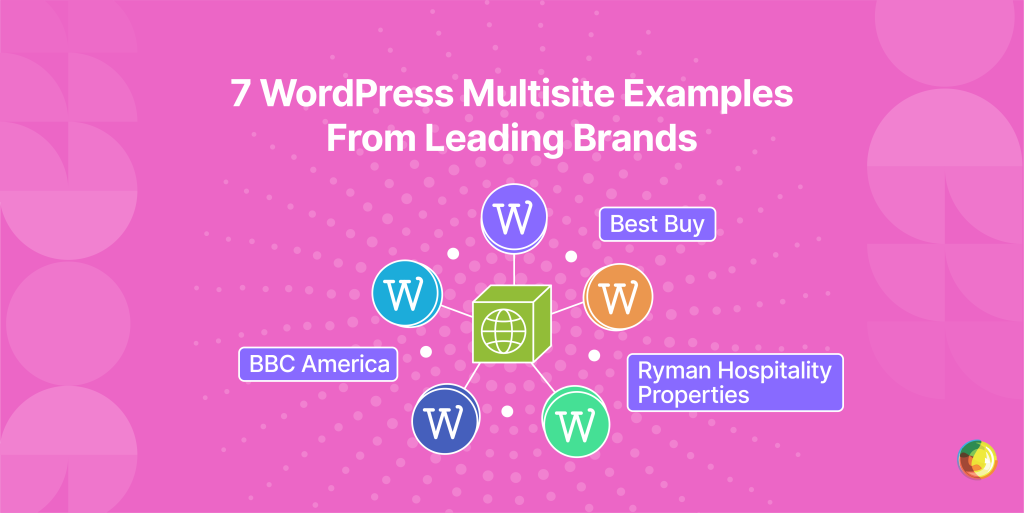
Key Takeaways
- WordPress Multisite allows enterprises to manage multiple websites from a single dashboard, reducing maintenance overhead.
- Shared infrastructure supports faster rollouts, consistent branding, and simplified plugin and theme management.
- Multisite is ideal for organizations with high shared functionality and central governance needs.
- Performance improvements depend on hosting infrastructure, but Multisite enables scalable, flexible site management.
- Careful planning, staging updates, and expert oversight prevent network-wide issues and ensure smooth operations.
You’ve seen WordPress Multisite power millions of websites on WordPress. But can the same architecture really support your 20 regional stores through Black Friday checkout – or your 200 departmental sites without creating a maintenance nightmare?
That’s the question every digital lead faces when stakeholders demand efficiency at scale. Multisite promises cost savings, consistent governance, and faster rollouts, but it also raises hard concerns: shared resources, plugin fragility, and the risk that one bad update could bring down an entire network.
We’re going to share with you seven real-world examples of WordPress Multisite networks at enterprise scale. Each case includes the metrics that matter (traffic volumes, update workflows, and timelines) so you can judge whether multisite is the right fit for your organization.
What Is WordPress Multisite?
WordPress Multisite lets you manage multiple websites from a single WordPress installation. One shared codebase handles updates, security, and plugins, while each site keeps its own content and branding. This setup reduces duplication, speeds up rollouts, and makes large networks easier to govern at scale.
All subsites share the same database and server resources. That shared architecture delivers clear benefits: updates run once for every site, storage is reduced, and brand consistency is easier to enforce. The trade-off is that performance and plugin compatibility must be carefully monitored – one poorly optimized site can affect the entire network.
For enterprises, Multisite accelerates launches, simplifies governance, and reduces operational overhead. Universities can host thousands of departmental blogs from one dashboard. Retailers can run hundreds of regional storefronts while ensuring consistent checkout experiences. Media groups can consolidate dozens of publications while still giving editorial teams the autonomy to publish at speed…
7 WordPress Multisite Examples
WordPress Multisite is already powering some of the world’s most demanding digital ecosystems. From media groups managing millions of visitors to universities supporting thousands of student blogs, multisite consistently proves it can scale.
These seven case studies span industries including media, higher education, retail, government, and non-profits. Each shows how a single multisite network can consolidate anywhere from two to more than 1,000 properties, cutting launch timelines, maintenance hours, and page-load times in the process.
1. Ask Media (Media)
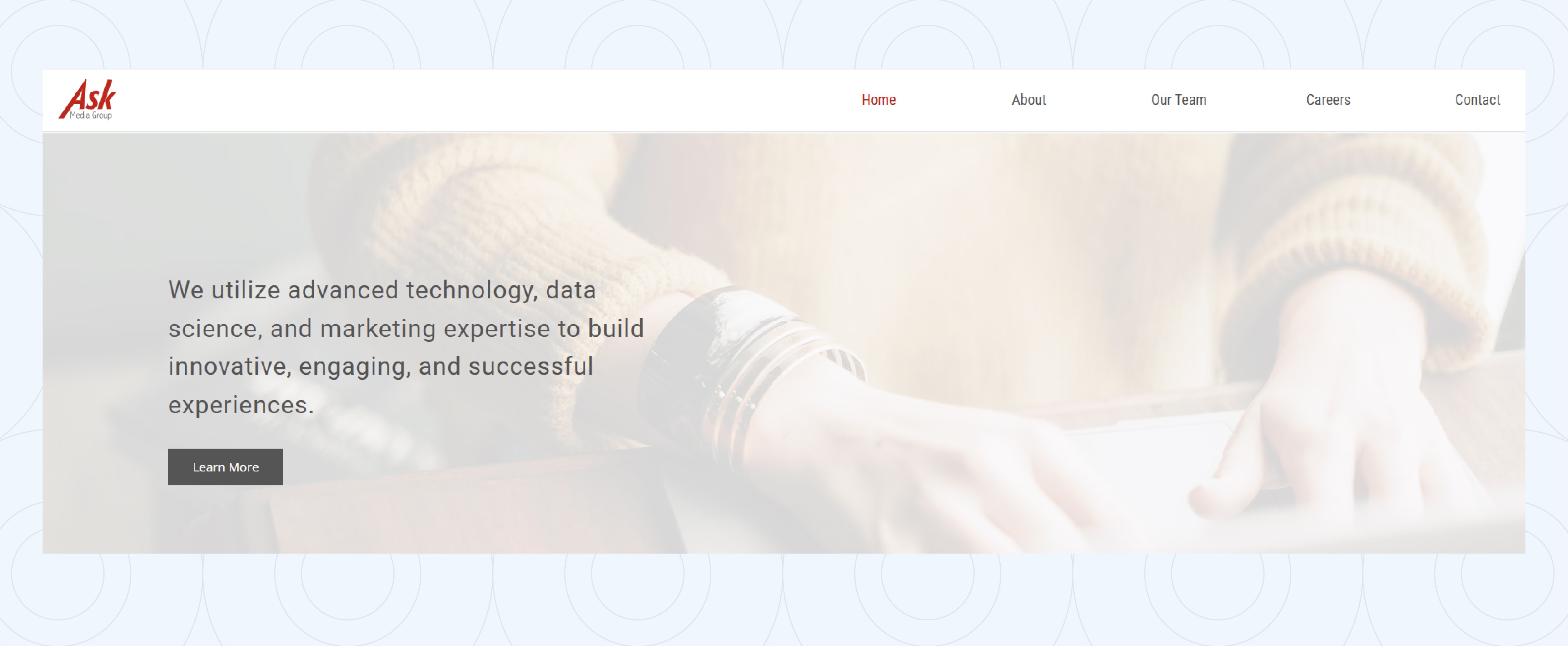
Ask Media homepage
Ask Media uses WordPress Multisite to manage 11 high-traffic properties serving 245 million monthly visitors. Since migrating to WordPress VIP Multisite, they’ve seen substantial improvements across the board.
Multisite has delivered impressive benefits, including:
- Faster Publishing: Streamlined workflows have significantly reduced publishing time, allowing editorial teams to focus on content rather than technical hurdles.
- Improved Site Performance: Page load times across the network improved by 65%, ensuring a smoother experience for users.
- Consolidated Revenue Operations: A unified ad-management plugin has simplified monetization, enabling consistent ad revenue generation across all sites.
In just 12 weeks, Ask Media successfully harnessed the power of Multisite, leading to better site management, improved performance, and more efficient editorial workflows.
When Multidots proposed migrating 11 sites in 12 weeks, I was very skeptical and unsure if it was even possible. But they did it! Working with the entire team has been a pleasure.
2. Harvard Blogs (Higher Ed.)
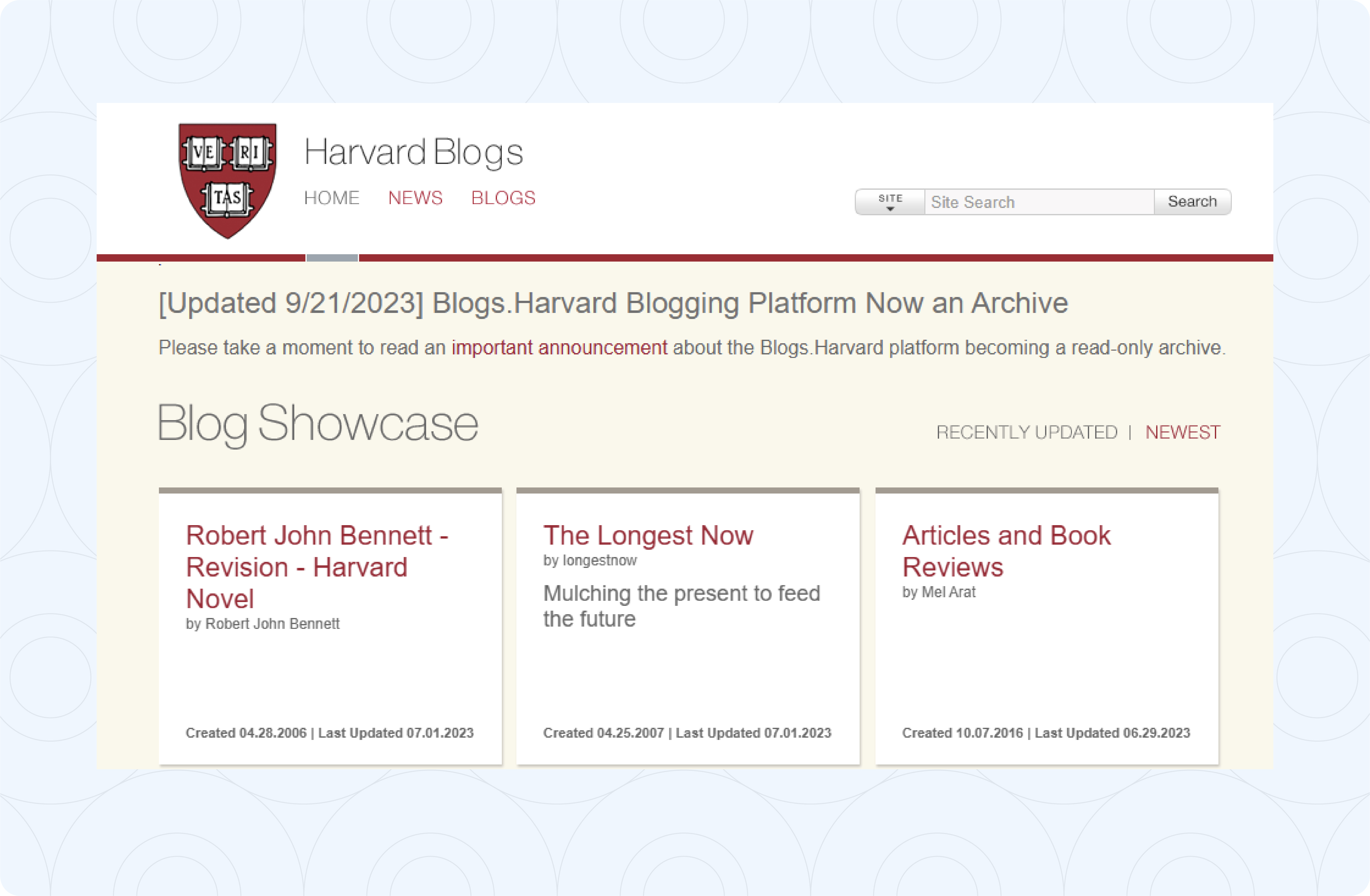
Harvard Blogs homepage
Harvard Blogs utilizes WordPress Multisite to host over 2,000 blogs for more than 9,000 users across the university. Anyone with a harvard.edu email address can launch a site within minutes, making it one of the most expansive academic publishing networks in higher education.
Each department and individual manages its own publishing, while Harvard’s IT team maintains the underlying multisite installation. Core, theme, and plugin updates are patched once at the network level, instantly applying across all sites.
The multisite framework supports open expression while enforcing consistent policies for security, backups, and user management. This balance enables thousands of micro-sites to thrive under one governance model without compromising compliance or stability.
3. BBC America (Broadcast Media)
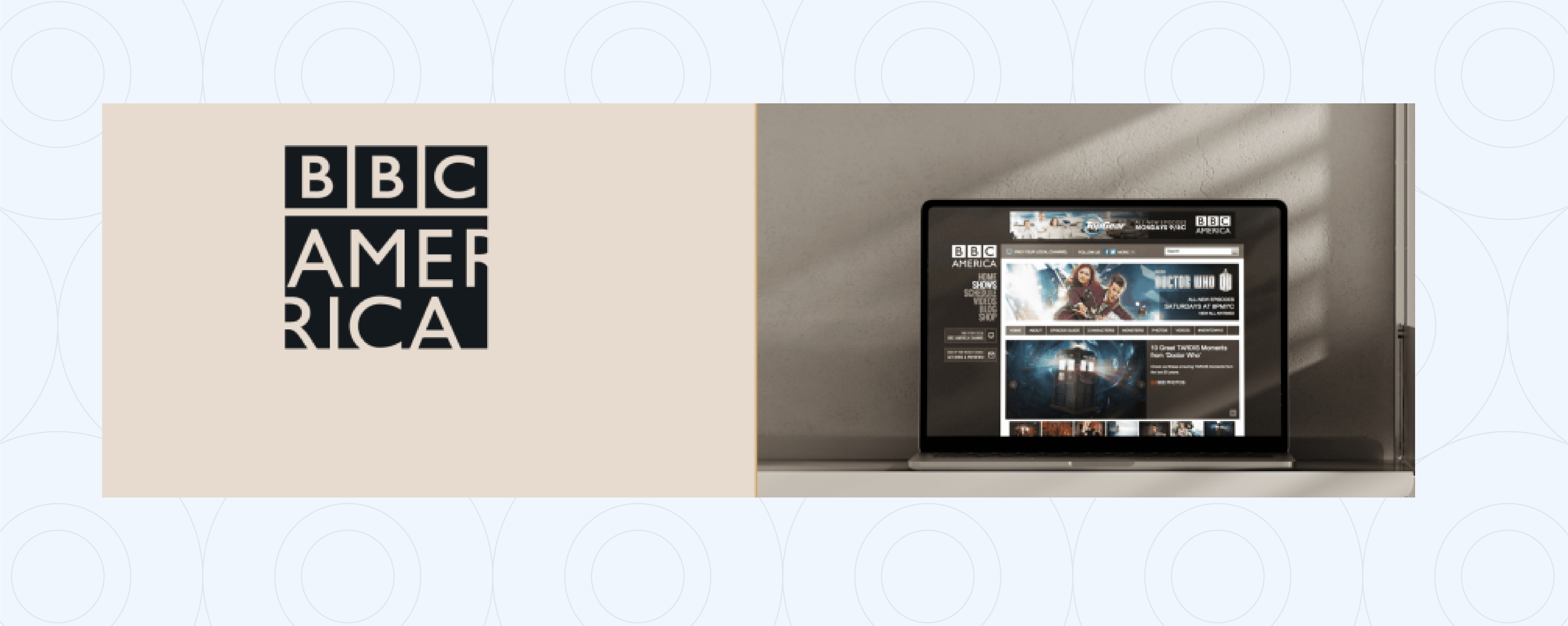
BBC America
BBC America uses WordPress Multisite to consolidate content from 3-4 legacy CMSs into one network. Each television show site runs on its own child theme built from a shared framework, ensuring consistency while allowing show-specific branding.
The process of creating a new show site dropped from 3-5 days to just ~2 minutes. Automated workflows generate essential pages, apply privacy settings, and connect to third-party APIs instantly.
Custom admin tweaks eliminated 80% of editors’ manual coding tasks. Producers now focus on content rather than troubleshooting HTML, leading to faster publishing and standardized user experiences across the network.
4. Ryman Hospitality Group (Hospitality and Entertainment)
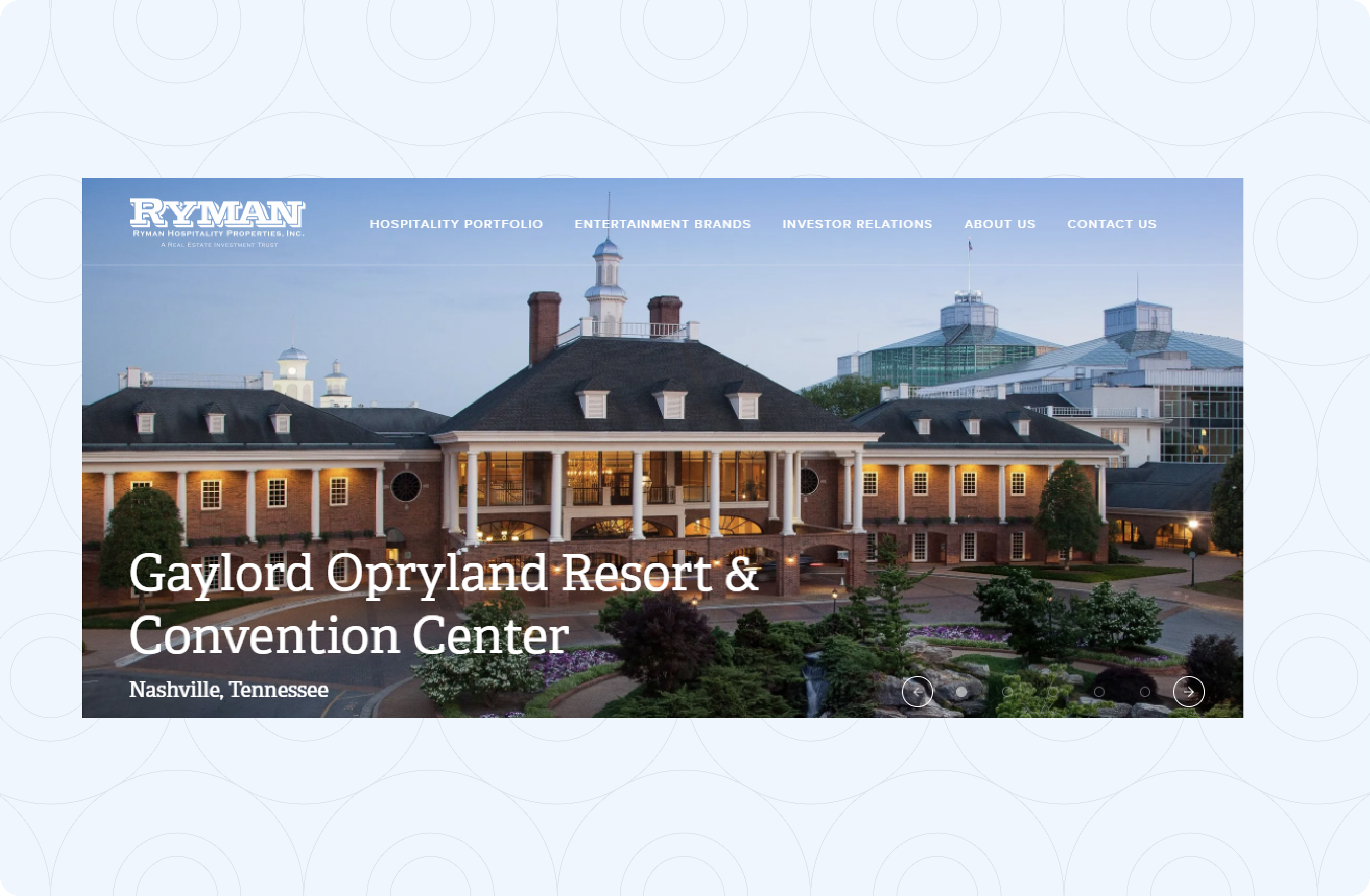
Ryman homepage
Ryman Hospitality Group, a premier hospitality and entertainment group, migrated 11 high-traffic sites to WordPress VIP Multisite in just six weeks. The switch to a unified Multisite architecture brought a range of significant benefits:
- Improved Site Performance: Page load times across the network improved by 30%, resulting in a faster, more seamless experience for users.
- Enhanced Accessibility and Compliance: All 11 sites became ADA-compliant, ensuring inclusivity and adherence to accessibility standards.
- SEO Preservation and Stability: SEO rankings and equity were fully preserved, keeping the group’s online visibility intact despite the migration.
By adopting Multisite, Ryman Hospitality Group streamlined their digital infrastructure, ensuring faster performance, better compliance, and more stable operations across their entire network.
Multidots team accomplished what we hoped they would in an incredibly tight timeframe. All 11 websites are now performing at their best on WordPress VIP Platform and Multisite Setup—Huge thanks to the Multidots team!
5. Morleys Education Furniture (Retail/eCommerce)

Morleys homepage
Morleys, the UK’s largest educational furniture supplier with over 90 years of experience, migrated from Magento to WooCommerce Multisite. Led by Impact Media, the project consolidated four retail websites and brought more than 90,000 SKUs under one networked dashboard.
Updates are now pushed once from the hub site and applied across all properties, while each retains its own branding and product catalogue. Advanced features like “request a quote” tools and dynamic search make the complex B2B range easier to manage.
GTmetrix scores jumped from D and E grades to straight A’s, bounce rates dropped by 24%, page views rose by 40%, and session duration increased by 16%. The phased rollout simplified maintenance and gave schools a faster, more intuitive buying experience.
6. University of British Columbia (Higher Education/Public Sector)
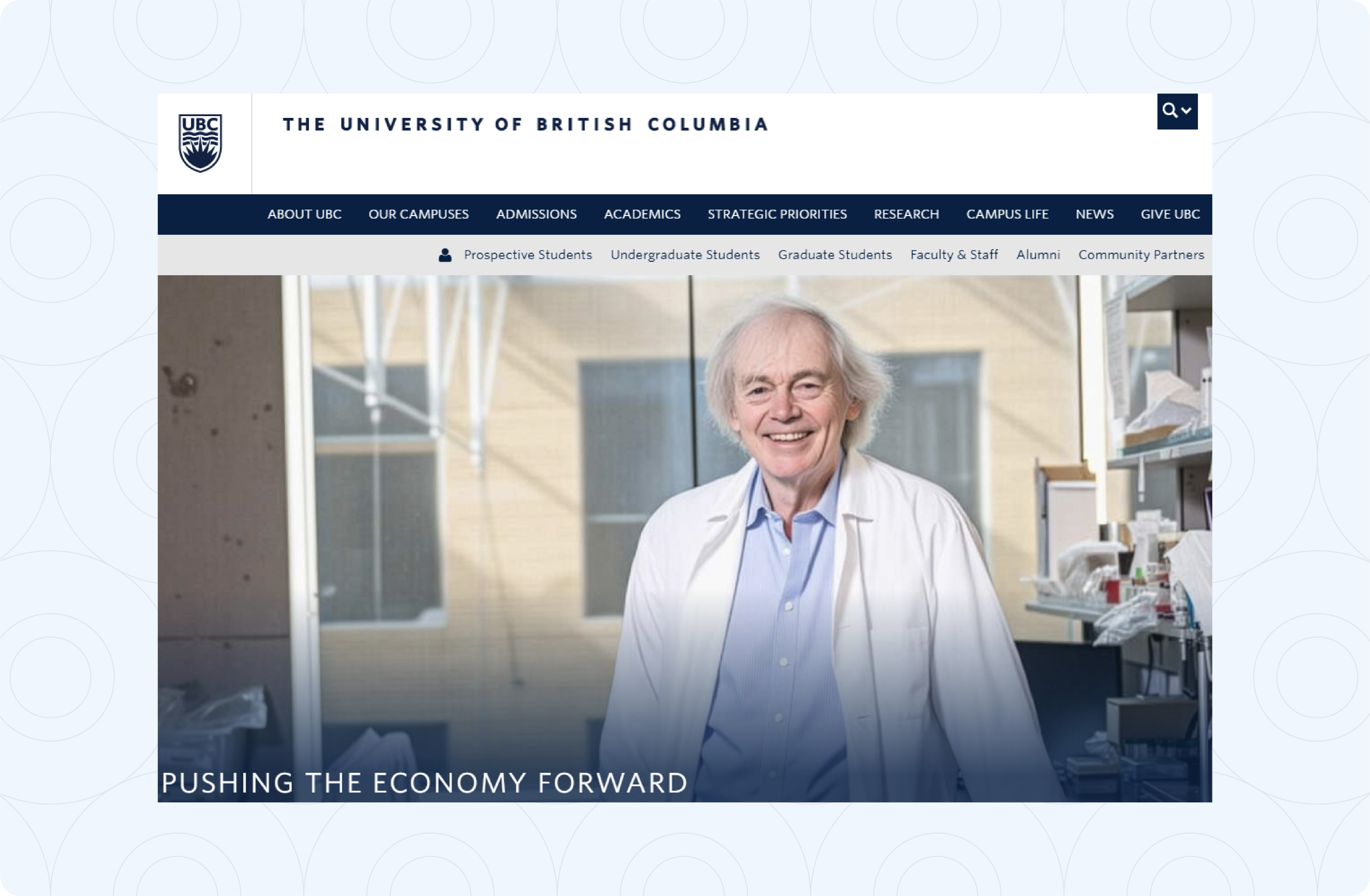
UBC homepage
The University of British Columbia uses WordPress Multisite to support publishing at scale across its campus. Professors, staff, and students can quickly launch blogs, course websites, or collaborative portfolios, often within minutes, and each site can accommodate multiple contributors.
Behind the scenes, the entire network is managed from a single codebase. Updates to WordPress core, themes, and plugins are applied once and automatically extend across every site, ensuring security and consistency without adding workload for IT.
This approach gives UBC the scalability it needs to host departmental sites, research projects, and student portfolios from one central dashboard, while still granting local administrators the flexibility to maintain their own community’s voice.
7. Edublogs (Education/Non-Profit Network)

Edublogs homepage
Since 2005, Edublogs has powered more than three million education-focused blogs using WordPress Multisite, serving classrooms, universities, and non-profits around the world.
Teachers and students can launch fully branded blogs in minutes. Each site is preloaded with education-specific plugins and themes, while built-in moderation tools and content filters help keep student data secure.
Because the network runs on Multisite, Edublogs scales effortlessly to handle surges in traffic during peak academic periods without disruption. Schools benefit from a stable, secure, and fully managed environment, with CampusPress overseeing all technical operations so local IT teams don’t need to get involved.
How Brands Solve WordPress Multisite Challenges
Enterprises adopting WordPress Multisite face unique challenges, but proven strategies exist to overcome them:
- Update Cascade: Changes in core code or plugins can affect the entire network.
Solution: Use staged rollouts – deploy updates to low-traffic test sites first to ensure stability before rolling out to critical sites. - Plugin Conflicts: Shared plugins can cause compatibility issues across sites.
Solution: Conduct thorough plugin audits and use tools like the VIP code-scanner to identify and resolve issues before deployment. - Performance Optimization: One busy site can slow down the entire network.
Solution: Use Redis object caching, CDN configurations, and query optimization to improve speed and prevent throttling. - Security: A vulnerability on one site can risk the whole network.
Solution: Ensure proper compartmentalization, conduct regular security audits, and implement continuous monitoring to catch issues early. - Expertise: Managing multisite networks at enterprise scale requires deep WordPress knowledge.
Solution: Multidots’ 15+ years of experience and 300+ multisite projects ensure optimized, secure, and scalable network management.
When WordPress Multisite Is (and Isn’t) the Right Fit
Deciding whether to adopt WordPress Multisite requires a structured evaluation rather than guesswork. A practical framework focuses on three factors:
- Shared functionality percentage across sites.
- Governance and compliance requirements.
- Tolerance for synchronized updates.
Where Multisite excels:
- Networks of similar sites with a high degree of shared functionality.
- A central brand with regional or departmental variations.
- Organizations that need unified user management.
- Businesses or institutions require consistent security and compliance policies.
Where Multisite might not be the best option:
- Sites with vastly different technology stacks or architectures.
Divisions with separate compliance or regulatory requirements. - A strong need for complete site autonomy per business unit.
Distinct development teams managing separate properties.
The decision matrix is pretty straightforward: High shared functionality + central governance need + acceptable update tolerance = Multisite win. Low scores on any factor suggest exploring alternative architectures.
Quick self-assessment:
- Count how many of your sites share a large majority of functionality.
- List your must-have governance and compliance requirements.
- Calculate your acceptable update windows.
- Identify any deal-breaker customizations that cannot be standardized.
If your answers cluster toward shared needs and central oversight, Multisite will likely drive efficiency. If they skew toward autonomy and fragmented requirements, consider standalone WordPress or other approaches.
How Multidots Guides Your Multisite Journey
Every Multisite project starts with a feasibility audit. Our enterprise WordPress architects assess your codebase, governance model, and infrastructure to confirm whether Multisite (or an alternative architecture) will deliver the strongest ROI. This upfront clarity ensures you invest in the right solution from the outset.
When it’s time to migrate or build, we use proven enterprise-grade WordPress automation tools and best practices that have supported more than 300 complex launches. Content, SEO equity, and workflows are carefully migrated into your new environment to ensure business continuity and zero downtime. Most organizations complete the transition in as little as 6-12 weeks, even at scale.
Once your network is live, our team provides continuous optimization and support. With 24/7 monitoring, blue-green update pipelines, security and performance audits, and SLA-backed coverage, your Multisite stays fast, compliant, and future-ready way after launch.
Is WordPress Multisite the Right Solution for Your Business?
By now, you’ve seen how enterprises from Ask Media to Ryman Hospitality have approached WordPress Multisite – gaining speed, governance, and scalability without sacrificing flexibility. You’ve also seen the boundaries: when shared infrastructure delivers real efficiencies, and when independence across sites may be the better path. The main difference is that you now have the evidence to make a clear, informed decision rather than a hopeful guess.
Whether you decide Multisite is the right architecture or determine an alternative approach makes more sense, you’re equipped with real-world examples and a practical evaluation framework to guide your next move.
If you’re ready to assess whether Multisite fits your organization, our team is here to help. Multidots’ migration experts have successfully completed hundreds of enterprise transformations, and we can build you a custom roadmap for success. Schedule your free consultation today to find out more.
Multidots Passkey Login
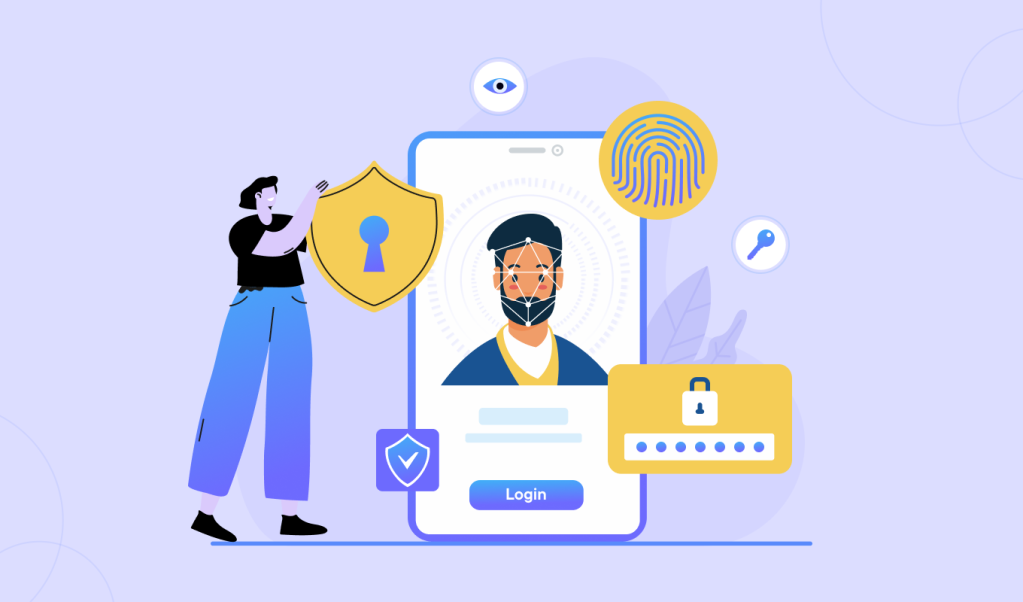
Multidots Passkey Login enables passwordless authentication for WordPress with Face ID, Touch ID, Windows Hello, or device PIN, delivering a fast, secure, and phishing-resistant login across desktop and mobile.
WordPress Multisite vs Single Site – Which Fits Your Needs?
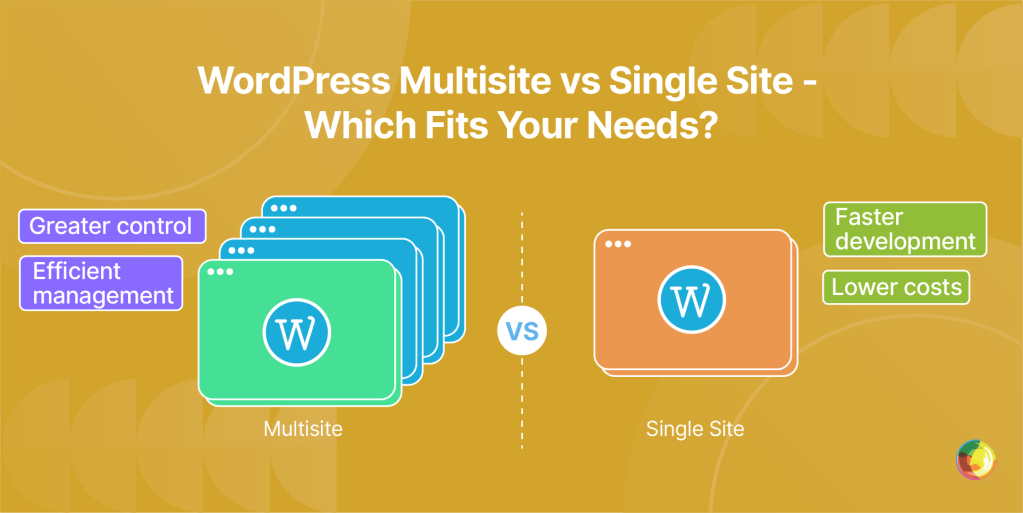
Key Takeaways
- Treat Multisite as a governance framework, not a feature. Success depends on strict role definitions, staging parity, and standardized workflows.
- Always stage updates first. One missed plugin conflict can bring down your entire network.
- Plan for the long haul. Extracting sites from Multisite takes 40+ hours each – build with separation in mind.
- Recognize that Multisite only pays off when 70%+ of your sites share plugins, themes, and workflows. Below that? Stick with single site installs.
- Single sites give freedom, but demand more ops work. Ten installs means ten audits, ten backups, ten release plans.
Out of WordPress.org’s 59,000 plugins, very few advertise multisite support, and that silence explains the forum horror stories about white screens after a simple update.
Let’s say you push a routine update on a Friday afternoon. No red flags in staging. But once it hits production, 30 sites go dark. Not a code issue – just one overlooked dependency that wasn’t network-activated. It’s the kind of thing Multisite makes easier to mishandle, and harder to recover from without the right setup and governance.
What often gets overlooked is that choosing Multisite vs. single site is about governance – making a promise that your sites will stay aligned enough to share management without chaos.
In this guide you’ll get a breakdown of how shared resources can drive efficiency or create risky single-point failures. You’ll get practical guardrails – like RACI matrices, plugin-vetting, and staging-to-production rules – to stop issues before they spread. Plus, we’ll cover caching and database strategies to keep sibling sites stable and give you rollback playbooks for when things don’t go to plan.
Let’s start with the verdict that could save you months of migration misery.
Multisite vs Single Site: The 60-second Verdict
Multisite is a system architecture where several websites run from one shared WordPress installation, using the same codebase and resources while maintaining separate content and site management.
Single site refers to a standalone WordPress installation where one website operates with its own dedicated codebase, database, and resources.
These setups are built on entirely different foundations for handling resources, permissions, and data. Knowing where they diverge ensures you choose the right option for your portfolio of sites.
When Multisite wins: Perfect for organizations where sites have shared branding and heavy plugin overlap: Universities managing department sites, franchises keeping brand standards, or media groups juggling multiple titles. If your sites align more than they diverge, Multisite is a great option.
When a single site wins: Go individual when e-commerce setups need separate gateways, or custom headless builds rule the day. When purposes and functions split, independence beats efficiency.
In short, Multisite trims licensing and hosting bills, but a single bad update can floor the whole network. Single site racks up costs but quarantines failures to just one property.
How to decide between Multisite and Single Site
Measure plugin, theme, and workflow overlap. If you have over 70% similarity Multisite usually pays off with streamlined control. Below that? Stick with single sites, and use centralized patching tools like ManageWP for flexibility without the governance drag. For more information read our article, WordPress Multisite Pros and Cons for Large Organizations.
Core Architecture Differences Between Multisite and Single Site
Database Structure
Database structure is the way WordPress stores and organizes site data. single site WordPress runs on one neat set of tables for everything. Multisite spins up separate wp_x_ tables per site, but all share the same core files.
The upside with Multisite? Updates roll out everywhere at once. The catch? Those sites are welded together for life. Untangling them later takes serious database surgery.
Setup Complexity
- Single site: A one-click install on most hosts, done in minutes.
- Multisite: Break out the toolkit. You’ll need manual edits to
wp-config.php, tweaks to.htaccessor nginx, and all plugins deactivated before you even flick the switch, otherwise conflicts come knocking.
Media Management
Media management is about how a WordPress installation stores, organizes, and serves uploaded files like images, videos, and documents. This shapes how content is structured behind the scenes and how easily assets can be accessed, shared, or optimized across a site or network.
Single site keeps uploads in one /uploads/ folder – clean and simple. Multisite splits files into /uploads/sites/{ID}/ directories. It’s tidy for GDPR compliance thanks to natural separation, but expect headaches when setting up CDNs or DAM tools that assume one unified structure.
User Permissions
User permissions define the roles and access levels assigned to individuals within a WordPress site or network. This controls what actions they can perform, from editing content to managing plugins or overseeing multiple sites in a Multisite environment.
Whereas single site sticks with WordPress’s five default roles, Multisite adds a controlling role to rule them all: The Super Admin. They control plugins and themes across the network, while site-level admins still manage their own content. It’s a two-tier hierarchy with centralized power at the top.
Site Separation Complexity
Site separation complexity is about the level of difficulty involved in extracting a single site from a shared environment. This is especially critical in Multisite setups where sites share databases, users, and plugins, making migration more time-consuming and technically demanding compared to standalone installs.
Migrating a single site? Export database, move files, update DNS – you’re done.
Multisite, though, is another story. Custom tables, serialized data, shared users… suddenly you’re staring at extraction jobs that can stretch past 40 hours per site. Add more sites, add more pain. That said, if you’re just lifting your Multisite sites over to a new host, you spare yourself the site-splitting headaches – way easier.
Operational Requirements
Operational requirements are the ongoing processes, policies, and safeguards needed to keep a WordPress site or network secure, stable, and up to date. This includes update routines, staging workflows, and governance practices.
- Single site: Standard fare – backups, updates, security basics.
- Multisite: A whole governance playbook. Even if you’re running a modest network, the stakes are higher than single-site:
- Update risk – In single-site, a bad update breaks one site. In Multisite, the same mistake can take down every site on the network in one go. That exposure forces more formal approval and testing steps.
- Testing complexity – It’s not just “does it work?” but “does it work across dozens of themes, plugins, and configurations?” Staging environments cloned to production become essential.
- Rollback planning – You can’t just roll back one affected site. A failed deployment means the whole network is at risk, so rollback strategies need to be watertight.
- Permission management – With network admins, site admins, and different capability levels, access boundaries matter far more. RACI matrices and documented rules keep changes controlled.
- Update risk – In single-site, a bad update breaks one site. In Multisite, the same mistake can take down every site on the network in one go. That exposure forces more formal approval and testing steps.
That’s why even smaller networks benefit from the discipline of plugin compatibility testing and staged approvals – all signed off and documented before anyone dares push to live.
Performance Truths
Multisite Reality
One sluggish sub-site can impact the whole network. Why? Because they’re all drawing from the same database pool and PHP workers. So when site #37 gets slammed with traffic or starts firing off clunky queries, sites #1 through #50 feel the pain. You don’t get isolated hiccups – you get brand-wide slowdown, with every property dragged into the mess.
Multisite Scale Solutions
As networks expand, performance engineering isn’t optional:
- 100+ sites: Enterprise object caching (Redis or Memcached) to ease database strain.
- 500+ sites: Database sharding and read-replicas to spread the load.
- Any scale: A CDN for media assets is critical infrastructure.
Single Site Advantage
Here, problems stay in their lane. A regional site running a flash sale won’t tank the corporate blog. Messy code on the careers page won’t bleed into the main marketing hub. Each site runs on its own resources, giving you built-in performance isolation.
Team Structure & Release Workflows
Multisite Efficiency
One Git repo, one deployment pipeline, one blue-green setup – this streamlined system speeds up launches and kills version chaos. Marketing hits one button, and every regional site updates in sync.
Smart teams use feature flags or branch permissions to avoid collisions. Team A pushes their splash page, Team B’s holiday promo stays intact.
Single Site Flexibility
Freedom fuels agility. Blog team posts at 9 AM, eCommerce drops a Black Friday build at midnight. Each crew runs its own schedule – no haggling over time slots, no sweating about breaking someone else’s release.
The Single Site Trade-off
Independence isn’t free. Ten WordPress installs mean ten updates, ten backups, ten audits. Whereas what Multisite handles in one sweep now multiplies across every property. Smart teams counterbalance this by using feature flags and branch permissions so campaigns don’t collide – Team A ships their splash page while Team B’s holiday promo stays untouched. The key is to give Super Admin rights to marketing ops, not IT. Campaigns need campaign speed, not ticket speed.
Operational Management & Updates
Multisite Discipline
Treat the whole network like one polished product. Numbered SOPs keep the chaos at bay:
SOP-001:
- Automated backups run at 2 AM EST across every site.
- Quarterly plugin audits confirm compatibility before updates roll out.
- Domain mapping follows hard rules – subdomains for regions (
uk.company.com), subdirectories for languages (/es/).
Single Site Overhead
Here, every property needs its own backup plan, its own plugin audit, and its own update schedule. More effort, but you get complete control over each site’s playbook.
Multisite Safety Net
Never update without a rollback plan. WordPress’s native plugin rollback plus a staging environment give you the insurance you need against one update knocking out the whole network.
Single Site Recovery
Easier rollbacks, since issues stay contained. That means there’s no domino effect that can lead to a network-wide meltdown. A broken update only breaks that site.
Migration Planning & Timeline Reality
Pilot phase (1 site): Test tools, check plugin dependencies, validate search-replace on serialized data. Budget 1–2 weeks minimum.
Core cluster (2–5 sites): Reuse pilot automation, add rollback safety, standardize themes. Expect 3–4 weeks per site with audits + approvals..
Network buildout (6–20 sites): Bulk moves = heavier QA, stricter governance, shared tables. Timelines stretch to 2–3 weeks per site, though parallel streams help.
Enterprise fleet (21+ sites): Database sharding, coordinated change freezes, 40+ hrs extraction per site before theme/plugin/URL work 40+ hours extraction per site before you even touch theme rewrites, plugin swaps, or URL restructuring.
Reality check: Migrations almost always overrun. DNS, freezes, cleanup, approvals drag timelines from “weeks” to full quarters. Ask Media’s 11-site migration landed in 12 weeks with dedicated resources and expertise. Best practice? Double your timeline, then tack on 20% for the gremlins that always appear.
Why Multidots Delivers Enterprise WordPress Success
With 300+ migrations under their belt, Multidots has proven results on both Multisite and single site projects — like protecting 245M monthly sessions for Ask Media Group and moving 11 sites to VIP Multisite for Ryman Hospitality in six weeks.Governance-first approach
Projects start with RACI templates, vetted plugins, and blue-green deployments – turning risky migrations into predictable wins.
Technical excellence
As a WordPress VIP Gold Partner with SOC 2 Type II certification, Multidots’ Core-contributing engineers deliver migration playbooks, performance boosts, and security protocols with platform-level insight.
From universities to multi-brand portfolios, Multidots builds governance that lasts, architectures that scale, and migrations that land on schedule – backed by 15 years of proof. .
Govern For Growth, No Matter Your Site Style
Multisite gives you the gift of centralization, but it’s ruthless – your success rides on governance that doesn’t collapse once the launch confetti settles. Skip the playbook for plugin approval, update routines, and role definitions, and watch your “efficiency” unravel into chaos in record time.
The double-edged sword of shared architecture:
- Core and plugin updates roll out across your entire network with a single click.
- But one slip without CI/CD pipelines and staging, and the breakages ripple everywhere.
Real scalability only happens if you embed caching, CDN integration, and database partitioning from day one. Miss that step, and a single traffic surge can choke every site on your network.
But here’s the budget truth few say out loud: Pulling sites out of Multisite costs far more than setting them up. Plan for separation costs before touching wp-config.php..
Ready to choose wisely for your org? Book a governance assessment with Multidots’ enterprise WordPress team. We’ll be able to help you decide whether Multisite or single sites are best for your organization. Let’s talk!
FAQs
-
Yes, but budget 40+ hours per site for extraction. The process involves exporting uploads from /uploads/sites/{ID}/, running database exports, executing search-replace scripts, updating DNS records, and extensive QA testing. Single site architectures avoid this complexity entirely since sites already exist independently.
-
In default Multisite configurations, yes. All sites share the same database and PHP worker pool. Enterprise solutions require object caching, database replication, and load balancing to isolate performance. Single site setups naturally prevent cross-contamination since each site runs independently.
-
The choice affects SEO and setup complexity, not governance. Subdomains (site1.domain.com) require wildcard DNS configuration. Subdirectories (domain.com/site1) cannot be activated on existing sites. Custom domains need domain mapping plugins. Single site architectures sidestep this decision entirely.
-
Every extra second of load time can cut conversions by up to 20 percent. Multisite’s shared resources can amplify performance problems across all properties. Single site isolation limits damage but requires individual optimization. Both architectures need performance monitoring and optimization strategies.
-
Multisite reduces licensing and hosting costs through consolidation but increases migration complexity. A single site has higher operational overhead but simpler disaster recovery. True cost depends on your team structure, technical debt tolerance, and future flexibility needs.
-
Yes, Multisite is built for large enterprises. Harvard Blogs runs 10,000+ academic sites on one Multisite network – proof that the ceiling isn’t WordPress core, it’s infrastructure. At scale you’ll need Redis for object caching, database sharding once you pass 500 sites, and CDN integration for media across regions. Get the architecture right, and Multisite will flex to whatever enterprise demand you throw at it.
-
SEO is preserved in a migration by treating redirects as the non-negotiable backbone of the whole process. Ask Media kept 245 million monthly sessions steady during their migration by nailing their redirects. That means:
- Nginx-level redirect rules for speed.
- A complete URL map before touching content.
- Subdomain vs subdirectory decisions locked in early.
Because Multisite consolidates URLs, every permalink change has search impact. Single site setups avoid that tangle, but they multiply the redirects you’ll need to manage.
